




INDUSTRY NEWS
Regulators investigate NZ drench sale stats
PARASITE CONTROL
Do right by young calves - feed, management come first
PRODUCT UPDATE
Unique earthworm DNA soil test now available






INDUSTRY NEWS
Regulators investigate NZ drench sale stats
PARASITE CONTROL
Do right by young calves - feed, management come first
PRODUCT UPDATE
Unique earthworm DNA soil test now available
Delivering a complete suite of crop protection solutions for today’s arable growers.

Samuel Whitelock – Plant Science Graduate, Lincoln University.
Our portfolio of powerful, proven products has helped farmers from one end of the country to the other create and maintain thriving businesses, and has earned us a reputation as New Zealand’s arable protection specialists.
Our suite of innovative crop protection solutions provide local farmers with everything they need to win the war on weeds, pests and diseases. Visit corteva.co.nz to view our range of online arable resources.

AND N-MITIGATION
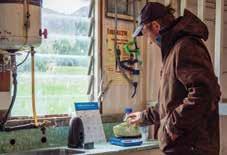
PARASITE CONTROL FEATURE DRENCH RESISTANCE IN SHEEP ‘GROWING EXPONENTIALLY’

PRODUCT UPDATE STEP UP TO THE NEXT GENERATION BIOSTIMULANT

AGRIBUSINESS HARNESSING THE POWER OF CREATIVE IN RURAL MARKETING

PRODUCT UPDATE NEW POWERFUL TECHNOLOGY TO PROTECT PIPFRUIT CROPS
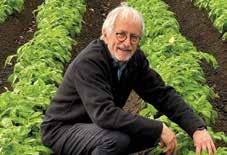
PEOPLE FUN, CHALLENGING, NEVER BORING –TECH GURU BIDS FOND FAREWELL TO THE PRIMARY SECTOR
TEAM
Editor Kathy Davis 03 577 5640 kathy@thelastword.net.nz
Advertising Manager Lisa Phelan 021 782 228 lisa@agrimedia.co.nz
Production & Design Amanda Vroombout 027 7788 274 production@agrimedia.co.nz
Accounts & Admin Hilary Armstrong 027 443 477 accounts@agrimedia.co.nz
Printed by Blueprint Ltd 03 348 0538 michael@blueprintmedia.co.nz
AgriMedia Ltd PO Box 36753, Merivale, Christchurch 8146 agrimedia.co.nz | novachem.co.nz
No part of this publication may be reproduced in any form without the prior written permission of the publisher. Opinions expressed in this publication are not necessarily that of the publisher and suggest independent advice be sought before acting on information or suggestions contained herein.
Editorial and photographic contributions are welcomed and should be sent directly to the editor, Kathy Davis. Editing of submissions is at the sole discretion of the editor and will accept no responsibility for unsolicited material.
Welcome to the September October issue of Agribusiness. Wherever you are, here’s hoping spring is off to a great start.
After what seems like far too long, there are signs of positivity out there, including a recent rise in the forecast dairy payout, improved returns for beef, record prices forecast for kiwifruit and interest rates heading in the right direction.
One thing that is still heading in the wrong direction, however, is drench resistance, and we have the latest stats and expert industry advice on this increasing challenge in our annual parasite management feature, starting page 8.
If any of your pastoral clients are not yet fully up to speed with the risks posed by rising resistance, or if they don’t think it’s a problem that affects them, they could be in for an unpleasant surprise in the not-toodistant future.
Plenty of tools and techniques are available
now to help them manage parasites in their animals without relying 100 per cent on drenches, and at the very least testing drench efficacy will prevent them wasting money they can ill afford on products that no longer work very well.
We also have quite an emphasis this issue on the latest news around plantain, as well as the annual APHNZ conference and this year’s high flyers in the arable industry.
Our product section is full of new and interesting launches for the horticultural and arable sectors, and don’t miss the details on an innovative new earthworm test for soil health.
One of the coolest parts of my job is getting to talk to people who’ve spent their whole working life in the primary sector about what they’ve seen and

done during long, successful careers.
It’s always a bit sad to see these folks step back as retirement beckons, because they know so much and share that knowledge so willingly.
But it reminds me every time that the agri sector is full of smart, hard-working people who dedicate themselves to the good of New Zealand’s most important industry, and we’re all better off for their contribution. Check out our people pages for more.
For AgriVet, I travelled south to spend a day in clinic that adds new meaning to the whole concept of building for the future. Enjoy! We’ll be back in November with our final issue for 2024.

New Zealand Food Safety has asked all drench companies registered with the ACVM to provide sales data for their products over the past seven to 10 years in what some sources suggest might be the first step towards regulating anthelmintic use in livestock.
“The primary benefit from this project will be a clearer understanding of sales trends as a representation of use,” says NZFS deputy director-general Vincent Arbuckle in reply to written questions from Agribusiness.
“This will help NZ Food Safety identify areas of further investigation to determine what, if any, role the regulator may play in helping to mitigate the risks of anthelmintic resistance and anthelmintic efficacy over time.”
It’s the first time such data on sale volumes, formulations and active ingredients has been sought by external regulators, and Arbuckle says supplier participation is voluntary.
Waikato-based EpiVets has been contracted by NZFS to collect and collate
the data into a master data set, and provide statistical analysis to identify any sales trends that may improve understanding of use by active ingredient, product type and species.
EpiVets was awarded the contract in March.
Arbuckle says following consultation with ‘key stakeholders’, the project will result in a summary paper published on the MPI website with findings and key trends, similar to the approach taken for antibiotic sales reporting.
This summary paper is expected to be published mid 2025.
“Raw data will be kept in confidence at all times to protect the privacy and commercial sensitivity of the information we have gathered.”
Antibiotic sales data has been compiled yearly by the ACVM since 2017 as part of a national action plan to reduce antimicrobial resistance.
Unlike drenches, however, antibiotics for animal use in NZ farming require a veterinary prescription.
Dozens of endo and ectoparasiticides for livestock are currently approved for sale in NZ through veterinary clinics, rural retailers and direct marketers, and at least 15 suppliers are listed on the ACVM register.
Arbuckle says the drench sales data collected will include that for products registered within the seven to 10 years timeframe, or de-registered within that period, to clarify how different active ingredients are being used as individual products move in and out of the market.
He describes the work as exploratory only at this stage, to determine areas for further investigation.
“The prudent use of anthelmintics is
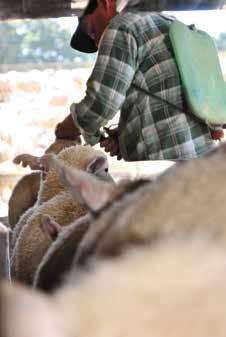
critical to effective management of internal parasites in food-producing animals, the health and welfare of treated animals, and the productive output of the primary industries.
“While resistance can develop to any anthelmintic due to a number of factors, understanding how and when anthelmintics are used in different farming situations is key in understanding resistance patterns.
“Sales data will allow insight into what types of products are being used, how they are being used, volumes used, and the decision-making process that drives use onfarm, by evaluating sales trends over time.”
Drench resistance in both sheep and cattle has risen sharply in recent years on NZ farms, including novel drench actives monepantel and derquantal. Latest figures put the annual loss to sheep farmers alone at $110 million.







Some types of pasture may better reduce nitrogen leaching on New Zealand dairy farms than plantain, a major new science review concludes.
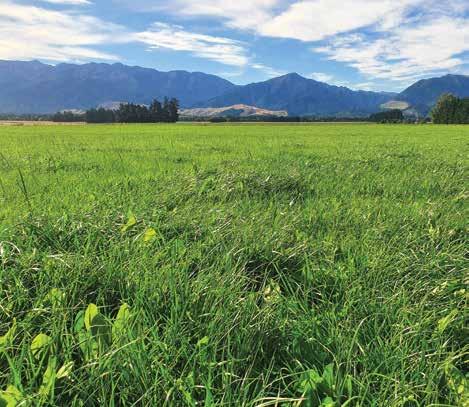
It recommends future research into pasture-based N-mitigation tools focus on other plant species which share plantain’s lower dry matter content but grow more feed, especially during the cool season; last longer and are easier to manage.
Authored by a team of leading pasture scientists across both academia and industry, the review was recently published in the NZ Journal of Agricultural Research, and examines 15 years of plantain research in NZ.
It finds little evidence that a visual presence of 30 per cent plantain in pastures will beneficially reduce N leaching, and says higher levels of plantain accentuate pasture management problems.
“We propose that the current recommendations around the use of plantain should be re-examined, and that opportunities presented by alternative forage species and pasture management practices should be investigated to provide
alternative approaches,” the authors say.
They highlight chicory and tetraploid hybrid ryegrass as two key alternative forages that merit further study for N-mitigation.
These could have a similar effect on N leaching and be easier to deploy at scale than plantain, with higher yield, better persistence and higher cow intake.
Review co-author Dr Tony Conner, Lincoln Genetics, is a plant geneticist and former manager of forage science at AgResearch, with a long career in applied plant science in NZ.
He believes forages other than plantain have not been adequately studied for their potential value as N-mitigation tools on NZ dairy farms.
“Clearly plantain increases animal urination, and we suspect that’s because it has a relatively high water content.
Obviously if the animal is taking in more liquid, it urinates more.
“But there are other forages with a higher
water content than diploid perennial ryegrass that might perform equally as well as plantain, including chicory and tetraploid hybrid ryegrasses, and I don’t believe these have been considered enough, given that plantain does not perform well in pastures.”
Conner says the new review of all the research done on plantain so far can benefit both scientists and farmers seeking future solutions to one of the most pressing environmental challenges facing the NZ dairy industry.
For scientists, the review highlights opportunities for improved experimental design of field trials such as those used to support claims of plantain’s effect on N leaching.
The review found many research studies supporting the beneficial impact of plantain do not stand up against scientific scrutiny associated with methodology and data interpretation.
“Controlled field experiments are inherently very difficult to do. They are affected by many co-related factors and different variables, and some of the results can be ambiguous and difficult to interpret,” Conner says.
“I would like scientists to think carefully about their experimental design for these kind of field experiments, with appropriate control treatments in place, as well as considering alternatives to plantain.”
For farmers, the review is a chance to take a second look at N-mitigation strategies.
“They’re caught in the middle here, because there’s been a lot of publicity about plantain, and the data is very hard to dissect. I’m hoping this will raise some questions in farmers’ minds.”
‘An examination of the ability of plantain (Plantago lanceolata L) to mitigate nitrogen leaching from pasture systems’ has been authored by Dr Colin Eady, Barenbrug; Dr Conner; Adjunct Professor Jacqueline Rowarth, Lincoln University; Dr Graeme Coles, Victoria University; Dr Matthew Deighton, Cropmark Seeds, and Professor Derrick Moot, Lincoln University. As of 20 August, a month after it was published online in the NZ Journal of Agricultural Research, it had been viewed close to 2000 times.
A progress report on multi-year research to demonstrate plantain’s N-mitigation efficacy at scale should be made public in November, MPI says.
Plantain Potency and Practice was awarded close to $9 million in SFFF funding by the then-Labour Government in 2021.
Project partners DairyNZ, Fonterra and PGG Wrightson Seeds committed a further $13 million.
Steve Penno, MPI’s director investment programmes, says the project is currently undergoing a scheduled mid-term review.
“The report from the review is expected to be delivered by October, and will provide an independent assessment of how the programme is tracking towards the outcomes, as set out in the original business plan, and whether the programme could be adjusted or improved.
“This report will also help MPI determine whether any tweaks are needed to the programme.”
Asked to respond to the recent science paper calling for more research into other forages for N-mitigation, Penno says MPI’s office of the chief departmental science advisor is assessing the article’s findings to ensure an independent viewpoint from the programme.
“We will follow the best available scientific evidence, and our evaluation of the paper’s findings will help shape our approach.”
At the time Plantain Potency and Practice was launched, then Acting Minister for Agriculture Meka Whaitiri said modelling by DairyNZ forecast a potential reduction of 15,000 tonnes of nitrate leached per year by 2035 using plantain on NZ farms.
“Plantain as a fodder crop has the potential to provide a cost-effective solution to improving freshwater quality. This programme is expected to demonstrate plantain’s efficacy at scale, so farmers have the confidence they need to invest in pasture and practice change,” she said.
DairyNZ says on its website Plantain Potency and Practice could save farmers $1 billion from 2031 to 2040.


Creative
The fundamental principle of marketing is for your message to be seen, heard, loved and remembered. Campaigns, video content, social media, trade show exhibits and even your reception areawhat differentiates your brand, inspires, engages, entertains, thrills and encourages participation more than anything else? The idea! We are a specialised rural creative, digital and media agency helping clients achieve business results through effective marketing.
Let our experts review your current brand or campaign messaging and offer some fresh ideas to better connect with your audience. Book your creative review before the 31st October. Includes a 1 hour workshop session.
From the regulatory review update at the leaders’ breakfast to the evening awards ceremony, last month’s Animal and Plant Health New Zealand conference in Wellington has been described as a resounding success.
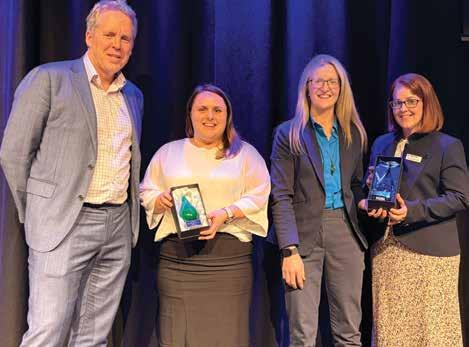
Regulation Minister David Seymour, who attended the leaders’ breakfast with Food Safety Minister Andrew Hoggard, used the event to announce terms of reference for the review now underway on getting new products approved for NZ use faster.
“Right now, there are too many delays, and the process is too complex,” he says.
APHNZ president Gavin Kerr said the announcement showed the government recognises challenges faced by the industry in this regard, and is committed to helping find solutions.
“Our world is changing, and innovation is key.”
Findings and recommendations from the regulatory review are expected to be delivered by the end of this year.
More than 120 people attended the conference, which included presentations by a range of guest speakers, including the new EU ambassador to NZ Lawrence Meredith; economist John Ballingall of Sense Partners, and Dr William Rolleston, co-founder of biotech and vaccine manufacturing company South Pacific Sera.
NZ farmers need the choice of all the tools in the toolbox, including gene technology, to remain competitive, add value to their products and support environmental
aspirations, Rolleston told the conference.
“This is the dawn of the genetic revolution. Change is coming to both agriculture and medicine. How will your business strategies need to adapt to this revolution?”
Fellow speaker Peter Wren-Hilton, CEO of Wharf42, said in Brazil it only takes 9-12 months to get new biological products registered for use in food production,
compared with five to seven years here.
“Brazil will be using more biologicals than the whole of the United States by 2030.”
NZ was at the opposite end of the spectrum in terms of access, uptake and deployment of such technologies, he said.
A highlight of the APHNZ evening function was the acknowledgement of two ‘exceptional’ emerging leaders, Nicole Morris of Corteva Agriscience and Lisa Lunn of Farmlands, both of whom demonstrate relentless enthusiasm and commitment to the industry, organisers said.
Morris completed the Kellogg Rural Leadership Programme in 2021, is on the council committee for the Agronomy Society of NZ, and is a member of the NZ Institute of Primary Industry Management. She has built an extensive network across the seed and crop protection sectors through her experiences at PGGW Seeds, Pioneer, Midlands Seeds, and now Corteva. Lunn is also a recent Kellogg graduate, and aims to enhance NZ’s position on the world stage by providing tailored, sciencebased solutions that maximise efficiency, productivity and sustainability in farming systems.
The APHNZ president’s award went to Kent Deitenmeyer, co-founder of Pacifivet and Biopacifica Labs in Christchurch, and the outstanding contribution award went to three regulatory affairs managers, Richard Mohan from Bayer, Stephen Salter from FMC and Matthew Salter from UPL.

Simon Nitschke, who achieves consistently high crop yields and shares his agronomic experience with other growers, is the 2024 Arable Farmer of the Year.
The Manawatu farmer was also presented with the Maize Farmer of the Year Award as the industry celebrated its achievers and innovators at the Arable Industry Awards in Christchurch last month.
Federated Farmers arable chair David Birkett said he was hugely impressed by the calibre and commitment of this year’s winners of awards in seven categories.
“Arable is a sector that tends to fly under the radar a bit in New Zealand, but it punches above |its weight.
“Our growers are pivotal to domestic food staples, seed
export markets and supplying the grass seed and animal grain that the bigger dairy, meat and wool sectors rely on.
Another highlight of the evening saw Mid-Canterbury farmer Syd Worsfold inducted into the newly formed NZ Arable Hall of Fame.
A 40-year veteran of the industry, Worsfold holds the record as the longest-serving United Wheat Growers director and was an inaugural member of the FAR board.
Worsfold was hailed as a willing supporter and mentor for any grower who needed help or advice.
Agronomist of the Year David
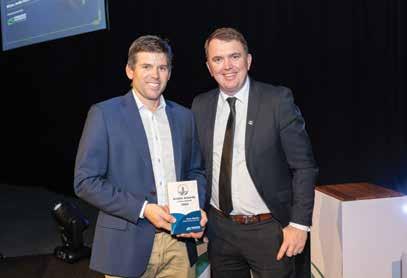
Weith, Bayer Crop Science, is a 30-year industry veteran from Timaru.
He shared knowledge to help achieve two world wheat yield records and a world barley record.
Weith is also very involved in training the new generation of young agronomists and farmers.
Waikato farmer Daniel Finlayson took out the Positive Environmental Impact Award.
Innovation Award winner Dr Soonie Chng, of the NZ Institute for Plant and Food Research, is dedicated to understanding arable crop diseases and finding solutions for
growers, such as sustainable management of ramularia leaf spots in barley crops.
The Canterbury-based Liquid Injection Arable Growth Group, a group of 10 farmers who have accelerated their production through farm trials and sharing knowledge, took home the Working Together Award.
Judges were very impressed by the way Cereal Grower of the Year Peter Hewson manages his water loss on low dryland cropping in Timaru, thanks to good tilling practices, drilling dates and careful planning.
The Seed Grower of the Year is Scott Rome.
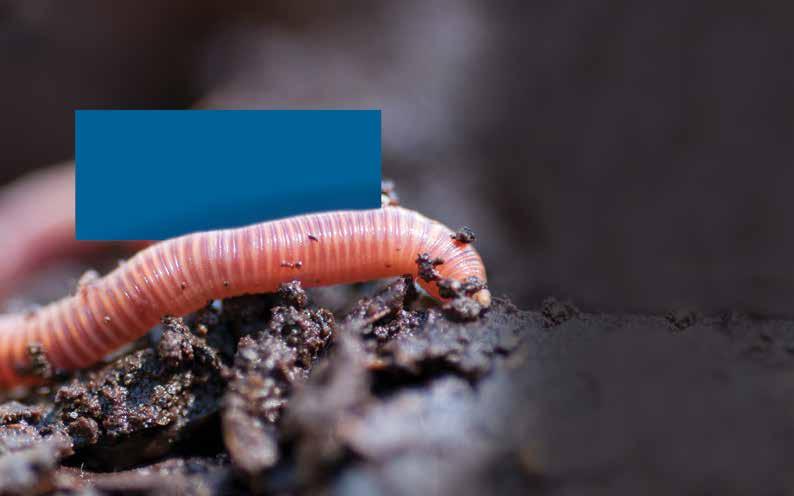
● Our new eDNA test enhances soil health monitoring, providing valuable measures on the biological health of your soil
● A simpler, less labour-intensive way to measure earthworm presence
● A New Zealand first, this development reflects our commitment to supporting farmers and producers on their sustainability journeys
this month we look at...




Accurate recording and data management provided by Gallagher Animal Management has been key to their campaign.
Ruatea station covers 712 ha near Pahiatua, and today carries 3600 Romney ewes, with 1400 hoggets and 150 trading cattle depending on the season.
The operation had been running smoothly until 2020 when the Foremans started noticing poor growth rates in their two-tooth ewes heading into mating.
A drench reduction test confirmed their worst fears.
Ruatea had developed resistance to triple combination drenches.
“We were ticking along nicely and our two-tooths were about to go to the ram, but we noticed their performance was slipping,” says Rob Foreman.
“I had been to a drench resistance workshop and saw the signs. We did the reduction test and the wheels fell off pretty quickly after that.”
The Foremans got vets and
specialists involved but wanted hard evidence to combat their challenge.
So they started using EID tags on ewes and ewe lambs, together with the Gallagher HR5 handheld reader and Gallagher TW3 weigh scale, which are all connected to Gallagher’s Animal Performance Plus App.
The system allowed the Foremans to record the tagged flock’s data every time they had them in the yards and track their performance over time.
“If we wanted to get on top of the issue, we knew we needed to streamline our data recording and analysis. We needed to know how every animal in our flock was performing,” says Rob Foreman.
Over time the system has helped identify which sheep respond to treatments, which sheep can have worms and cope okay with having them, and even which sheep are resistant to worms.
“It has allowed us to accurately trial treatments and see if they
are working on the treated sheep. We can accurately identify the ones that perform and respond to drench treatments and the ones that don’t, just by looking at weight gains and performance.” Every time the sheep are handled, data is recorded about each animal.
“Every time we have them in the yards, we’re recording data and not just for drench resistance. We are also noting things like black wool or bad feet. It all helps us make optimal breeding decisions,” says Rob Foreman.
This year is the first year they have done drench checks and had zero egg counts come back for both lambs and older ewes, suggesting their drench resistance issue is on the way out.
“I wouldn’t say we’ve beaten it, as I don’t know if you can ever beat it, but we’re certainly at a point where we can manage it.
“Being able to accurately record the data on every ewe in
our flock has been a huge part of that.”
The system is also critical in ensuring the most efficient and safe use of all animal health treatments on their flock.
If sheep are in the yards for treatment and a gate bursts, using the Gallagher system he can run the mob back through and the data will tell him immediately which sheep have already been treated so he doesn’t double up.
“Farmers are always condition scoring at docking, and you may need to drench them at that time. You record that you’ve drenched them in the system on the way through and if they jump back into the mob, you don’t lose them. You know they’ve been drenched because you already recorded it.
“Being able to record all this vital information right there on the spot has been a complete game changer for our operation and has certainly helped us get on top of the drench resistance with hard and fast data.”
At least one in three Kiwi farms that undertook drench efficacy testing with Techion’s drench reduction FECRT service this year has drench resistance.
Every year Techion, the owner of FECPAKG2, undertakes more than 30,000 FEC (faecal egg count) tests at its Mosgiel laboratory, including thousands of FECRTs (faecal egg count reduction test) through its DrenchSmart service.
Techion has FECRT data back to 2005 and for the past five years at the end of the DrenchSmart FECRT season, the company has undertaken a detailed analysis of test results.
The five-year trend shows drench resistance growing exponentially.
Furthermore, this year’s review of the test results and sheep farming returns shows drench resistance is costing the sheep farming industry more than NZ$110 million in lost earnings.
This equates to around $70,000 per farmer.
Techion’s FECRT testing in the first seven months of 2024
showed that triple drenches were ineffective on 34 per cent of New Zealand sheep farms.
Other drench options fared no better; BZ/Lev combinations failed on 47 per cent of properties, while Lev/Aba combinations failed on 39 per cent of properties tested.
Another worrying trend in this year’s results was that 14 per cent of farms confirmed resistance to monepantel, with 29 per cent having suspected resistance to monepantel and 30 per cent of farms with suspected resistance to derquantel.
“The reality for sheep farmers is that the industry’s reliance on drenches to deal with parasites is under threat,”
Techion founder and managing director Greg Mirams says.
“The good news is that the problem can be managed when farmers integrate alternative parasite management and

Farmers must increase FEC testing to monitor for parasites.
move beyond solely relying on drench to deal with the problem.
“As access to effective treatments reduces, integrated parasite management strategies are essential to safeguard the future of livestock health”, Mirams says, “This means farmers need to significantly change quarantine procedures and adopt alternative methods for parasite control.
“Farmers must increase FEC testing to monitor for parasites; invest in FECRT testing so they are confident the treatment they are using is effective and they should educate themselves about how to implement integrated parasite management strategies.”
Techion’s FECPAKG2 parasite testing platform enables farmers to undertake on-farm FEC testing with all the results stored securely on the Rata software, which means farmers can monitor parasite contamination by mob and paddock over time.
Using its Mosgiel laboratory, Techion undertakes FECRT testing through its DrenchSmart service, while the company’s PhenR service uses FEC results to help breeders identify sheep that are naturally resistant to parasites. Techion processes around 30,000 FEC samples through its Invermay laboratory and has hundreds of thousands of FEC test results from 19 years of testing.

How many of your clients are reaching for the drench before their replacement heifer or dairy beef calves even have a developed rumen?
You might be surprised to find how prevalent this is.
And the more you can do to dissuade them from such an approach this spring, the better, says Wormwise programme manager Ginny Dodunski.
Over the past year, Wormwise has ramped up its efforts to help farmers, vets and rural professionals alike understand the importance of sustainable parasite management in young cattle, and more attention now is being paid to the risk of widespread parasite resistance in this class of stock.
But Dodunski says there are still way too many calves being drenched too young, without testing to find out what’s actually affecting their performance.
“It’s by no means uncommon for calves to be treated with an anthelmintic at five, six or eight weeks old. We know farmers are adding drench to calf milk, or using pourons even though this is not good practice.
“Usually they think they’re doing the right thing; they might have calves out on pasture not growing as well as they would like, or with messy bums, and they assume the problem is gastrointestinal parasites when in fact it’s often coccidiosis.”
There’s little point drenching replacement or dairy beef calves before about 10 weeks of age because up until then their rumen is not fully developed, she says.
Feeding calves really well, to encourage rapid weight gain; cross grazing and making sure they have access to feed with low larval contamination are much more effective ways to achieve healthy, fastgrowing animals.
Equally, she says, prioritising optimal nutrition and management will help curtail the type of serious triple drench resistance identified in young, intensively grazed dairy stock earlier this year.

In January, AgResearch scientists Dave Leathwick, Tania Waghorn, Chris Miller and Christian Sauermann published results of a study which confirmed triple drench resistance (benzimidazole (BZ), macrocyclic lactone (ML) and levamisole in combination) in Cooperia on four monocultural systems with near total or total reliance on drenches for worm control.
“If calves are raised properly, we can absolutely stop the problem,” Dodunski says. “All you have to do is look at the success of Pamu’s organic calf unit, where most calves are achieving or exceeding liveweight targets without any drench at all because they’re so well fed and monitored.
“It just goes to show how much room there is to move if you start with a plan to avoid worm intake, and good feed. While going organic is a step too far for many, there is a lot of scope to drench less via better nutrition and planned grazing.”
Dodunski says if gastrointestinal parasites do need to be controlled after calves reach 10 weeks, farmers should use an oral treatment known to be effective, and not mixed with milk.
In fact Fonterra has said anthelmintics must not be mixed with milk as part of its animal health plan guidelines for young stock parasite management for The CoOperative Difference.
Oral drenches are best for calves, and should be used as long as possible, with injections used next if required.
“Pour-ons show variability in the amount absorbed, deliver the least amount of drug to the worms and are often more expensive. A pour-on has to go through multiple tissue systems to get to where the parasites are.”
Ultimately, she says, the key message for those working with farmers to grow healthy dairy heifers or dairy beef is that drenching is just one tool within a much bigger
management system to control the impact of parasites.
“Instead of them asking, which drench should I use, we want them to ask themselves how to reduce their reliance on drench,” she says.
Key tactics include cross grazing cattle with sheep, or alternating between calves and adult cattle in their grazing systems, particularly on paddocks that are used for calves year on year.
Forage crops provide lower worm challenge feed while promoting better calf growth through feed quality, and farmers should regularly check the efficacy of the drench they’re using as well as making sure drench guns are correctly calibrated.
“It’s also a good idea to draft mobs of young heifers or dairy beef into weight lines so they can be more accurately dosed,”
Dodunski says.
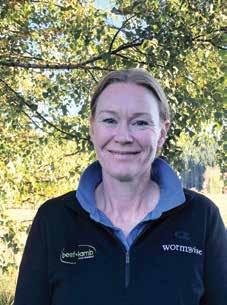

With the power of dual DMI fungicides Prosaro® is the perfect partner for SDHI and strobilurin fungicides, which together can provide a significant return on investment at harvest.
• Use Prosaro for powerful broad spectrum disease control for wheat, barley and ryegrass seed crops
• Prosaro hits disease hard with two DMI fungicides, prothioconazole and tebuconazole
• Use in combination with VIMOY® iblon® to safeguard your yields and deliver higher returns
• Prosaro is trusted by NZ farmers to provide consistent disease control Insist on Prosaro from Bayer.
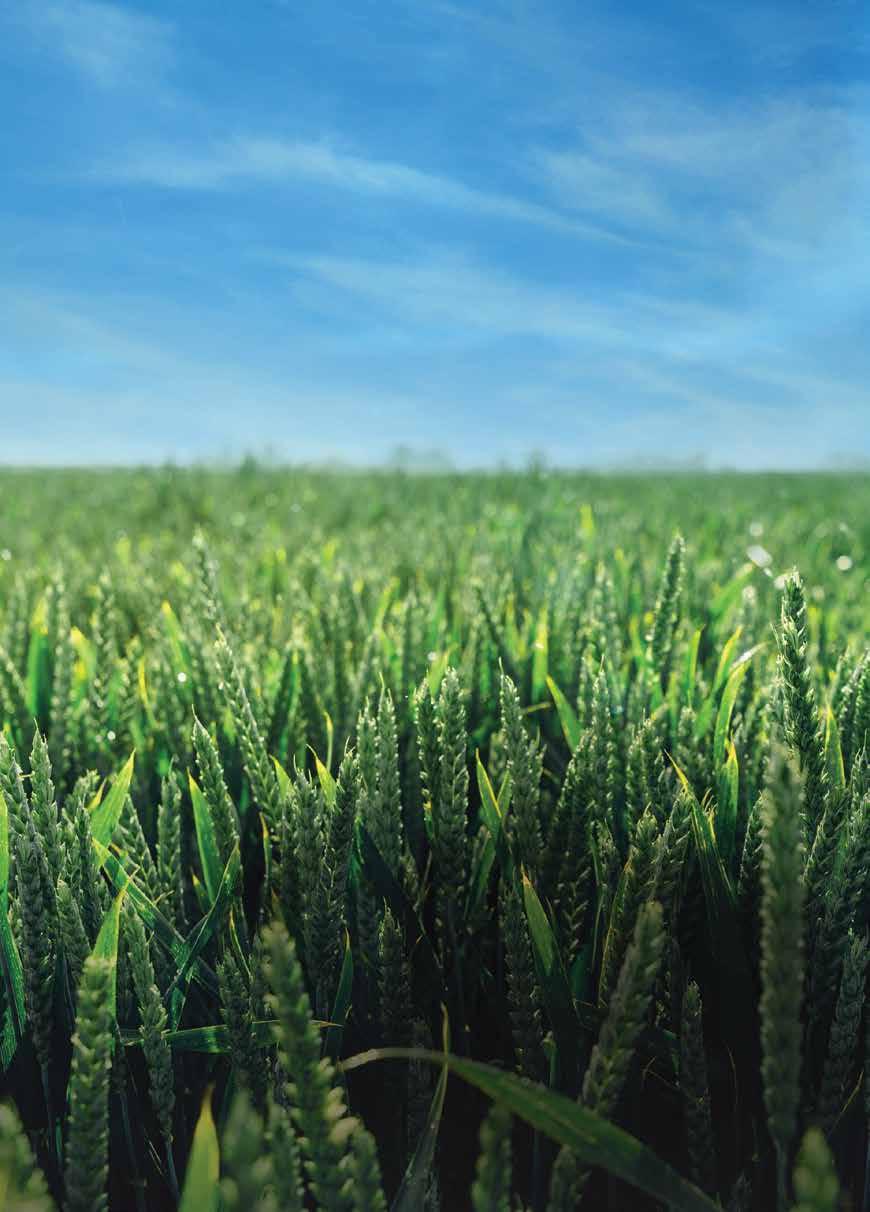

Words: Zoetis
If there was ever a year for farmers to rethink how they spend money and drench cattle, this is it!
With increased costs and average to poor returns, inputs have to really make a difference in this environment.
The Rethink Drenching campaign is a recent initiative by Zoetis, leading the way in more sustainable parasite management. While all businesses require sales to thrive, Zoetis understands that if farmers are able to use their premium products for longer because they were used wisely, everyone benefits. The campaign encourages farmers to answer an interactive survey to help them uncover which of their practices may be more or less risky for drench resistance and provides some tools and strategies, other than using a drench, to minimize risk. Hence, rethinking the drench component. While the campaign is more focused on sheep, the principles are similar for cattleboth dairy and beef.
Monitoring whether animals actually need a treatment, feeding them well and using different stock classes to mop up contaminated pasture are all tools that farmers can utilise.
When they do need to drench, Zoetis has a good selection of products for most occasions. One of the leading products for cattle is Cydectin® Pour-On.
This is the number one selling drench in New Zealand and for good reason1 It has been proven in many clinical trials to be highly effective against the parasites that affect growth and milk production in cattle.
In 2012 it was again shown to be highly effective against Ostertagia, the most dangerous parasite in cattle, which can kill calves and older cattle and reduce milk production2,3 . Cooperia worms which mainly affect young stock, have developed widespread resistance to this family of anthelmintic, which was also shown in this trial, so a drench containing levamisole is best used to control this parasite.
Productivity studies also showed cows treated with Cydectin Pour-On, whether at late lactation, dry off or at calving, all produced more milk than their untreated herdmates, regardless of the time of year4
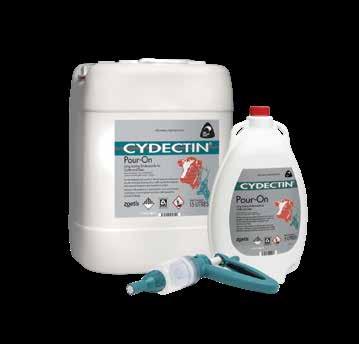
The basis for this is its innovative longacting formulation which allows it to kill the parasites in the animal and prevent newly ingested larvae from becoming established, so protecting cattle from ongoing challenge.
This means the animals can convert their feed directly into growth or milk more efficiently. For young cows or those that are immunocompromised, stressed, have suffered illness and may be more susceptible to a worm infection, Cydectin Pour-On can protect them for longer, especially against important Ostertagia parasites.
Cydectin Pour-On has claims against Ostertagia for 35 days, lungworm for 42 days and Trichostrongylus axei for 28 days, the longest available protection. Aligned with the Rethink Drenching campaign, cows that are in good condition and not compromised should not receive a drench.
This allows a good source of refugia (the good susceptible worms) on to the farm.
Cydectin Pour-On can also be used in young stock, when they face a heavy challenge, although ideally, they should be grazing pasture that has been ‘cleaned’ by
older stock or be on such good quality and quantity feed, that the challenge they face is low.
If for management reasons farmers can’t get to calves at the normal time or want to be sure they are covered while at remote properties or during a lungworm or other parasite challenge, Cydectin Pour-On can be a great option for that.
For dairy cows, it has no milk, meat or bobby calf withholding so can be used as and when the cow needs the drench.
For more information on Cydectin Pour-On and what your clients are learning about good worm management strategies, visit changeitup.nz.
1Data on file.
2Leathwick, D.M. Miller, C.M. Efficacy of oral, injectable and pour-on formulations of moxidectin against gastrointestinal nematodes in cattle in New Zealand. Veterinary Parasitology, 2012.
3Bisset, SA. Helminth parasites of economic importance in cattle in New Zealand. New Zealand Journal of Zoology 1994.
4Murphy, A. The effect of treatment with moxidectin, a long acting endectocide, on milk production in lactating dairy cows Buiatrics World Congress, 1998.

Delivering a complete suite of pasture protection and brushweed control products for New Zealand farmers.
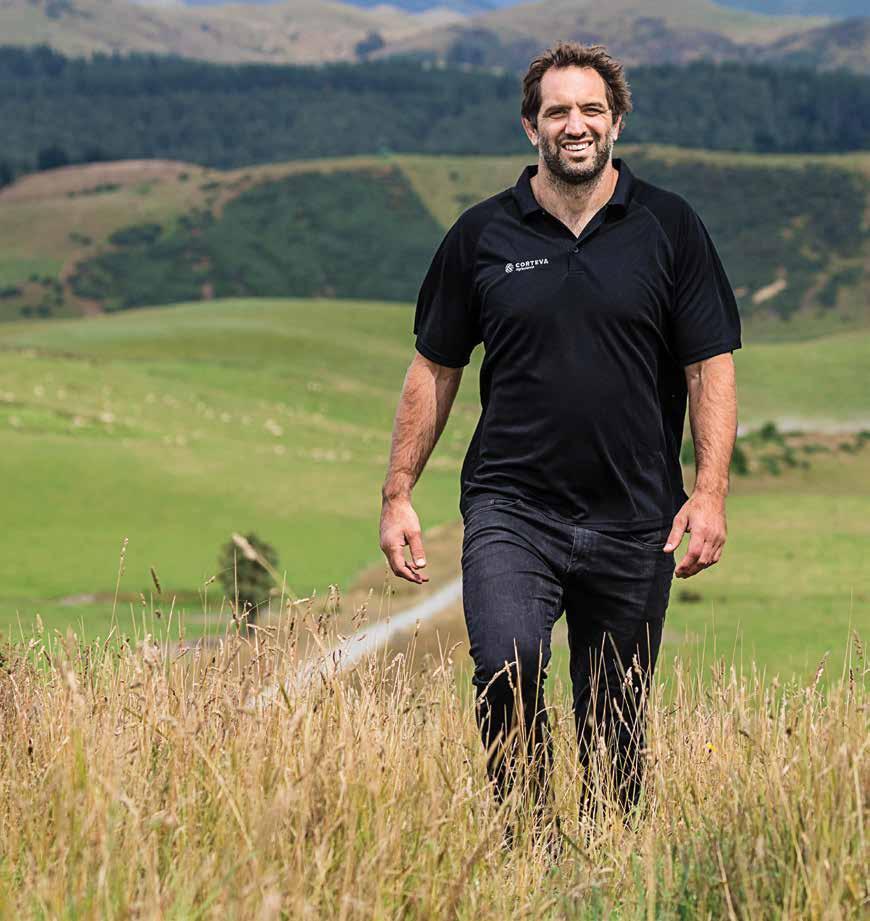
Our portfolio of powerful, proven products has helped farmers from one end of the country to the other create and maintain thriving businesses, and has earned us an excellent reputation as pasture protection and brushweed specialists.
Our extensive suite of herbicides provides farmers everything they need to win the war against weeds and brushweeds. Visit corteva.co.nz to view our online pasture and brushweed resources.
If one sheep measles tapeworm inside one dog can produce 250,000 eggs a day, and those eggs can remain viable for over 300 days, how many tapeworms might it take to cause a big problem in your farmers’ lambs?
The answer is, not many at all. Just two or three inside a single dog can remove a surprising amount of income with zero warning.
That’s the risk/reward calculation Michelle Simpson wants rural professionals to be talking about with their farmers if the topic of ‘saving’ money on monthly dog dosing comes up this season.
“If farmers stop dosing, for any reason, and end up with a storm, or condemned lambs as a result, it’s going to cost them more in the long run,” says the Ovis Management project manager.
“My advice to those who supply praziquantel dog wormers is to discuss why their clients should continue purchasing, and to keep them informed about the various products available.”
Her comments come as Ovis
Management continues to help one farmer through a storm that has been going on for months, with thousands of dollars’ worth of lambs condemned for cysts at processing.
Nationwide prevalence for the period from October 2023 to the end of June 2024 is 0.50 per cent, with the North Island averaging 0.73 per cent and the South Island 0.39 per cent. Simpson says prevalence has increased across New Zealand, with the Canterbury, West Coast, Wellington, Otago, Southland and Gisborne areas increasing significantly.
Other regions had a decrease in prevalence, with Waikato and Bay of Plenty falling to 0 per cent during the period.
“It’s imperative farmers do not drop the ball on sheep measles prevention as times get tough.”
That includes getting the dose right – 25 mg praziquantel

per 10 kg dog body weight.
Taenia ovis tapeworms live in the small intestine of dogs. Dogs become infected by eating sheep meat with the intermediate cystic stage of the parasite.
From the time of infection, it takes about two months of development before cysts in sheep muscle are infective to dogs, where they remain infective for only two to three months.
Once these viable cysts are consumed by the dog, it takes approximately 35-42 days to mature and start producing eggs.
Dogs defecate the eggs onto pasture where sheep graze and ingest them. Eggs can remain viable on pasture for at least
more than ink on paper.





300 days and can be carried by flies, wind and rain up to 10 kms. Once sheep are infected, they are infected for life.
On-farm control needs to include monthly dosing of all dogs with a product containing praziquantel; ensuring any sheep meat fed to dogs is frozen for at least 10 days at -10°C or cooked to a core temperature of +72°C; restricting external and roaming dogs; and collecting and disposing of all sheep carcasses in areas away from dogs.
Off-farm control includes dosing all dogs travelling near sheep grazing areas with a product containing praziquantel at least 48 hours before arrival.


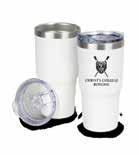

APTIVIS® fungicide powered by ADEPIDYN® technology
Next generation control of Black Spot and Powdery Mildew in pipfruit


Scan for more information, visit www.syngenta.co.nz or talk to your local distributor.

® APTIVIS and ADEPIDYN are registered trademarks of a Syngenta Group Company. Registered pursuant to the ACVM Act 1997, No. P010024. Always read the label completely before use. © Syngenta 2024. AD230724
A powerful and dependable new active ingredient to protect apples and pears from key diseases is available for local growers this season.

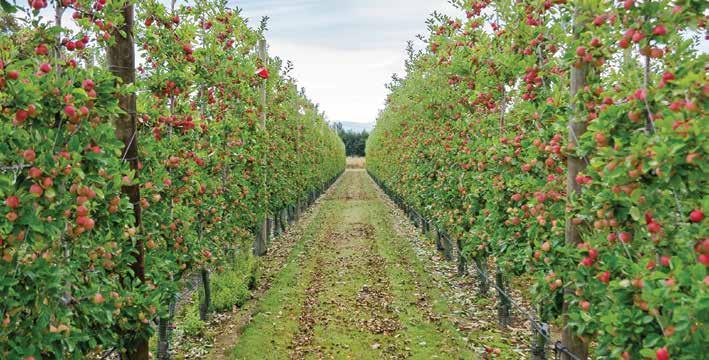
APTIVIS fungicide is now registered for the control of black spot and powdery mildew on apples and pears, and Alternaria leaf blotch on apples.
APTIVIS is a fourth generation SDHI fungicide (Group 7) from Syngenta and contains pydiflumetofen (ADEPIDYN technology), which controls infection of these significant diseases during a period, when flowers and foliage are highly vulnerable.
Paul Hassan, technical services lead for Syngenta New Zealand, explains: “APTIVIS powered by ADEPIDYN technology is a next generation SDHI fungicide, due to its unique molecular structure and versatility. It works by interfering with the energy production of the fungal cell, making it unable to grow and reproduce, so the pathogens that come in contact with it quickly die.”
After application, ADEPIDYN technology moves quickly from the leaf or floral bud surface into the deeper plant tissues and from there systemically translocates within the plant’s vascular system.
This reservoir of active ingredient protects the growing plant tissues over an extended
period to deliver powerful and dependable disease control.
“Black spot, powdery mildew and Alternaria are diseases that pipfruit growers must always contend with during spring. APTIVIS has a great technical fit in pipfruit crop protection programmes against these diseases because they are highly sensitive to the potency of the active ingredient.
“In New Zealand development trials, APTIVIS has consistently shown a high level of control against target diseases, when compared to older generation SDHI fungicides and we are very confident of its place in a fungicide programme,” says Hassan.
Syngenta has thoroughly tested APTIVIS with other products and it has shown excellent crop safety and compatibility when applied in tank mixture with a wide range of other fungicides, insecticides, plant growth regulators and foliar fertilisers.
As well as this, it is compatible with Integrated Pest Management (IPM) programmes ensuring the safety of beneficial insects, including Aphelinus
mali, when applied according to label directions.
Syngenta has a proud history of providing high-quality fungicide solutions to the pipfruit market, including trusted products such as SCORE WG, CHORUS and SEGURIS Flexi.
APTIVIS should always be applied preventatively and according to the label. To comply with current SDHI resistance management guidelines, apply a maximum of four SDHI-containing products per season in alternation with an effective fungicide from a different mode of action group.
Additionally, always apply in mixture with a multi-site protectant fungicide that is not at risk from resistance at full label rate.
APTIVIS can be applied a maximum of three times and up to four times concentrate per season from tight cluster to 90 per cent petal-fall.
This pre-harvest interval will ensure nil detectable residues at harvest. Available in 1 L and 5 L containers.
For more information about APTIVIS use in pipfruit, contact your local Syngenta territory sales manager.
Agrecovery, New Zealand’s accredited product stewardship scheme operator for farm plastics, has launched a new scheme to recycle wool fadges.
It aims to significantly advance recycling efforts within the wool industry by responsibly processing High-Density Polyethylene (HDPE) wool fadges into recycled materials.
End-of-life HDPE wool fadges will be collected, sorted and sent to Recycle South’s processing plant in Southland to be turned into high-quality plastic pellets for resale.
Farmers in NZ have long been adept at repurposing wool fadges for various uses on their farms, often reusing them multiple times to maximise their use.
However, despite these efforts, options for recycling or further repurposing have remained somewhat limited, Agrecovery says.
This new industry-specific scheme streamlines the recycling process,
enhancing the lifecycle of these products within a circular economy, and draws momentum from the NZ Wool Dumping Group’s demand for used and repaired woolpacks.
This collaboration helps decrease on-farm costs to ensure a sustainable future for NZ farmers.
“The scheme aligns with our sustainability goals, promoting a fully cyclical use for wool fadges, from repair of used fadges by NZ Wool Dumping Group through to their end of life,” group general manager Liam Murphy says.
“This is the start of the innovation we have planned for wool fadges in which we hope to continue working closely with Agrecovery and Recycle South.”
Drawing on over 25 years of extensive experience in the NZ wool industry,

More innovation planned.
Agrecovery commercial manager
Richard Carroll was instrumental in developing the new scheme.
“We are immensely grateful for the collaboration and foresight of the wool industry, which has partnered with us in this endeavour,” he says.
“Their commitment has been vital in shaping a scheme that not only addresses key sustainability challenges but also sets a new standard for environmental stewardship within the sector.
“It serves as an inspiration for future stewardship initiatives and reflects the powerful impact of industry-wide cooperation in addressing environmental issues.”

Wetlands, rivers and streams provide essential water supplies for stock and farm operations — and support our native wildlife. However, these habitats are also havens for introduced predators. And their impact on native species can be devastating. Our toolbox will guide you through how to manage pests in these unique spaces.
Words: Grosafe Group
Seaweed-based biostimulants are helping transform New Zealand agriculture and horticulture with their impressive range of benefits, boosting both crop productivity and sustainability.
These biostimulants come from marine algae and are packed with natural compounds like polysaccharides, vitamins, and minerals, all of which play a crucial role in improving plant health and resilience.
One of the standout benefits of seaweed-based biostimulants is their ability to help plants cope with environmental stresses. Studies have shown that these biostimulants can enhance a plant’s ability to endure tough conditions like drought, high salinity, and extreme temperatures.
They do this by supporting the plant’s physiological processes, making it more resilient against these challenges.
Take, for example, the BioPower range from Grosafe Group.
Grosafe uses fresh ascophyllum nodosum seaweed, which is
particularly effective due to its high levels of bioactive compounds such as alginates, fucoidans, and polyphenols. These compounds are known for their ability to boost plant growth, improve stress tolerance and enhance nutrient uptake.
What’s more, using fresh ascophyllum nodosum means the biostimulant retains its natural potency and is free from synthetic additives. This makes it a great choice for organic and sustainable farming, supporting healthy crop development and increasing yields.
Grosafe Group has taken its successful BioPower Liquid product to the next level by adding fish amino acids to create BioPower N-Boost, with an NPK of 9.9:1.2:4.0.
These amino acids are rich in
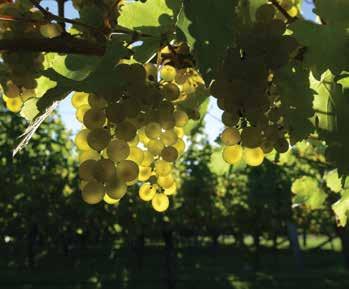
essential nutrients, peptides, and growth factors that help plants grow stronger. They promote better nutrient absorption, improve root development, and stimulate hormone production, which all contribute to more vigorous plant growth. BioPower N-Boost also helps plants withstand environmental stresses and disease pressure by strengthening the plants natural defences.
Additionally, these amino acids boost soil health by enhancing microbial activity and increasing organic matter, which improves soil structure and fertility.
BioPower N-Boost is designed to further support soil health and soil structure and increases nutrient availability through polysaccharides that help bind the soil particles together. This leads to better soil aeration and water retention, which enhances root development
The Environmental Protection Authority (EPA) has determined there are no grounds to review the approval for the use of glyphosate in New Zealand.
The Environmental Law Initiative (ELI) applied to the EPA in February 2024 to decide whether there are grounds to reassess glyphosate and glyphosatecontaining substances, citing significant new information about the negative effects of the substance.
After reviewing information provided by ELI and recent international research on the substance, a decision-making
committee of the EPA has decided there are no grounds for a reassessment.
“What we received from the applicant does not meet the criteria for significant new information and does not justify a reassessment of this substance - particularly when considered alongside the findings of other international regulators,” says Dr Chris Hill, general manager hazardous substances and new organisms.
and nutrient uptake, ultimately boosting crop yield and quality.
BioPower N-Boost also contains growth regulators like cytokinins and auxins, which help to stimulate cell division and elongation, leading to even more robust plant growth.
With their natural origins and diverse advantages, nextgeneration biostimulants are invaluable tools for optimising crop productivity and supporting sustainable farming practices.
BioPower N-Boost is Bio Gro certified and provides a new, high-performing, effective option for a wide range of agricultural and horticultural crops.
Grosafe Group’s latest launch is helping to align the company with the growing demand for more environmentally-friendly options, providing a raft of numerous benefits, from enhancing plant resilience to improving soil health.
Regulators from jurisdictions including the European Union, Australia, and the United States extensively reviewed glyphosate.
They concluded it should not be classified as a carcinogen and that any potential risks from using the substance have not changed.
“We carefully weighed the information provided by the applicant alongside a large amount of other evidence and consider that products containing the substance are safe to use if the existing rules are followed,” says Dr Hill.
“We will review any new research on glyphosate that shows a change in the risks and is relevant to the NZ context.”
The studies supplied by Environmental Law Initiative as significant new information were largely literature reviews, which are not usually used to justify changes to the hazard classification or rules for use, EPA says.
ADEPIDYN ® technology
The NEW SUPERPOWER has arrived to control Ramularia and Scald in barley.
A flexible solo fungicide that actively protects for longer!

Scan for more information, visit www.syngenta.co.nz or talk to your local distributor.
A new foliar fungicide to protect barley crops from ramularia leaf spot and scald is available to farmers this season.
MIRAVIS Flexi is a fourth generation SDHI fungicide (Group 7) from Syngenta and is powered by the active ingredient ADEPIDYN Technology.
“It is a new active ingredient for barley growers offering powerful activity and longlasting control of these key diseases,” says Paul Hassan, technical services lead for Syngenta New Zealand.
“Barley growers understand that ramularia leaf spot and scald can both cause significant yield losses if not properly controlled, so they’ll be pleased to know that, based on seven years of pre-release trials by Syngenta and our industry partners, MIRAVIS Flexi provides marketleading control of ramularia.
“Multiple trials have demonstrated significantly higher levels of control of this disease compared to older generation SDHI fungicides.”
After applying MIRAVIS Flexi preventatively, a reservoir of ADEPIDYN technology is formed within the waxy layers of the leaf.
From here, the active ingredient moves acropetally, from base to tip, and into the leaf tissue over an extended period, delivering very long-lasting disease control.
“When MIRAVIS Flexi is sprayed onto the leaf, it moves steadily towards the tip via the xylem protecting the whole leaf.
“The yield-building leaves are protected from the damaging effects of disease for longer, keeping the canopy green and driving yield.
“MIRAVIS Flexi is a solo-active formulation, which means growers have the flexibility to add the most suitable tank-mix partner to control the spectrum of diseases that present a threat at the time.
“It has been thoroughly tested with other products and has shown excellent compatibility with a wide range of other fungicides, insecticides and plant growth regulators that may be used in a tank mixture with it.”
MIRAVIS Flexi is best used at T2 – typically GS 39-49 – to take best advantage of its high efficacy on ramularia.

MIRAVIS Flexi should always be applied preventatively and at a rate of 1.2 L per hectare in mixture with another approved, non-cross resistant fungicide recommended for the control of the same target disease.
The addition of an approved triazole fungicide is recommended.
Make no more than two applications per season or any foliar sprays containing a Group 7 fungicide.
“Syngenta has a long history of providing high-quality fungicide solutions to the cereal market including AMISTAR and ELATUS Plus,” Hassan concludes.
“MIRAVIS Flexi is the third product from the MIRAVIS fungicide family to be launched in New Zealand following the introduction of MIRAVIS 200SC for potatoes and MIRAVIS Prime for grapes.”
Purchases of MIRAVIS Flexi help growers qualify for free nozzles along with any other Syngenta products purchased.
For more detail, contact your local Syngenta territory sales manager.
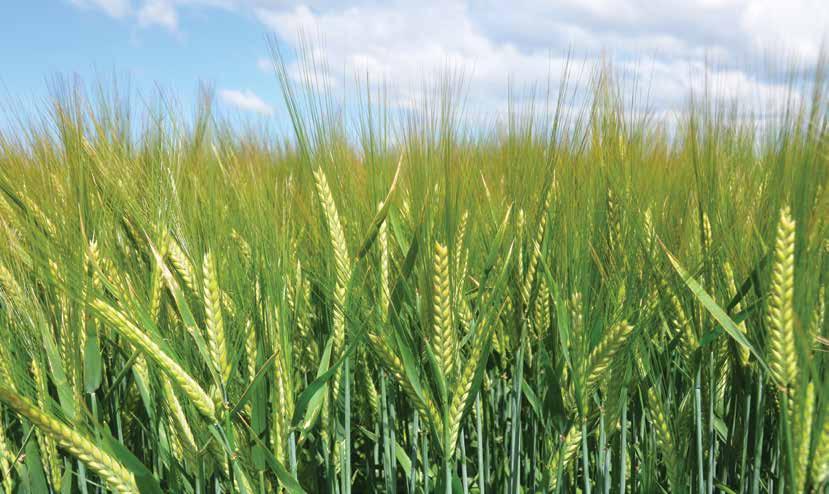

New Zealand’s largest privately owned testing laboratory has introduced a new test to detect earthworm eDNA levels in soils, marking a significant development in soil health assessment.
This test, developed by Hill Labs in collaboration with AgResearch, is a NZ first.
Leveraging its expertise in DNA testing from other areas of their business, Hill Labs developed the test to provide farmers and producers a convenient way to get an indication of the biological aspect of their soil health, and to open the door to a raft of other potential applications in the near future.
Earthworms are often seen as indicators of healthy soil because they need good soil conditions to thrive.
In high-quality soil, a typical NZ paddock would usually have earthworm populations exceeding 400 per square metre and 250 per square metre in arable land.
Hill Labs’ earthworm eDNA test measures environmental DNA (eDNA) – tiny traces of genetic material left behind as earthworms move through the soil.
Existing methods to assess earthworm populations are labour-intensive and require specialist knowledge, limiting the number of samples and convenience.
The new eDNA test, used in tandem with
existing field visual assessments, offers a convenient way to enhance soil health monitoring.
Hill Labs founder and executive director, Dr. Roger Hill, who has played a large role in developing the test, says it’s an important advance.
“Soil is the foundation of all life, essential for productive farming, healthy plants, and clean waterways. Our new earthworm eDNA test gives farmers an additional tool to better monitor soil health, helping to promote sustainable farming in NZ and beyond.
“The biological component of soil health is difficult to measure and measuring earthworms provides a high-level view of a soil’s biological health.
“And this successful earthworm eDNA soil test is just the beginning. We’re dedicated to exploring the full potential of this technology across different crops and farming methods to support NZ’s farmers and growers.”
Hill Labs scientists, Lisa Hsu and Sara Loeffen, worked closely with AgResearch senior scientist and leading earthworm

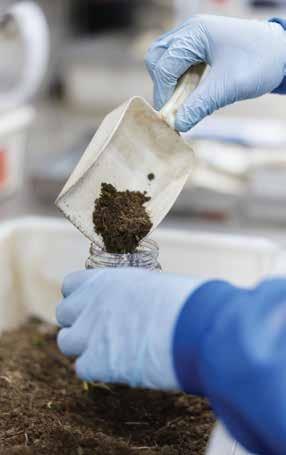
specialist, Dr. Nicole Schon, on this project, with the initial feasibility study funded by the Our Land and Water National Science Challenge via its Rural Professionals Fund.
“Through research we are learning a lot more about soil health and the need to move beyond the limited set of measures and indicators that we used to rely on,”
Dr Shon says.
“This provides us with a richer understanding of what we can do to maintain or improve soil health for our primary industries.
“We know that the abundance of earthworms and other biological activity is an important component for healthy soils, and having this new tool for testing the abundance of earthworms via eDNA is going to make measuring soil health easier and more efficient.”
Partnering with AgResearch, Hill Labs is gathering feedback from farm consultants and industry experts to refine and expand the test’s applications.
Future consultations will explore potential uses for this technology with tasks such as pest identification and pathogen detection.
Words: Cropmark Seeds
It’s disappointing when ryegrass fails to live up to its promise, leaving farmers frustrated and weary of perennial cultivars.
We understand that resowing perennial ryegrass is a significant investment and Kiwi farmers and agronomists demand enduring, high-yielding performance for the lifetime of the cultivar.
They also seek reliable assurances against common issues such as ryegrass staggers and insect damage.
Taking onboard this feedback, we’ve developed Stampede diploid perennial ryegrass with the innovative CM142 endophyte.
The journey to Stampede CM142 has been one of perseverance.
Developed by Cropmark’s breeding team in Canterbury and incorporating insight from farmers, Stampede represents many years of research and insight to combine New

Zealand’s best ryegrass genetics with a new and unique novel endophyte.
Stampede CM142 is more than just another ryegrass cultivar says Cropmark’s plant breeder Stephane Montel.
“This late heading diploid perennial ryegrass boasts consistent yield performance validated through rigorous on-farm trials across NZ and Australia.
“It’s a very nice-looking grass, dark coloured with very high tiller density to improve its persistence and ensure a reliable source of high-quality forage throughout the year.”
Central to Stampede’s remarkable resilience is the CM142 endophyte, a ground-breaking discovery with origins tracing back to the harsh alpine regions of Greece.
Harnessing the natural insect deterrent capabilities of epoxy janthitrem alkaloids, CM142 combined with Stampede’s robust genetics “offers a natural defence mechanism to increase pasture persistence, which is a key attribute for perennial pasture,” Montel says.
Words: RAGT
Choosing the right lucerne involves understanding the characteristics of the different lucerne options available, with winter dormancy being a key differentiator of lucerne cultivars.
Lucernes are rated on an international dormancy scale with 1 representing highly winter dormant and 10 highly winter active. Cultivars should be selected based on your clients’ farm system, climate, and location, to maximise quality and dry matter
production when it’s most needed.
At RAGT, we provide high-performance lucerne cultivars tailored to diverse systems and regions.
RGT Force 4 is a key foundational lucerne cultivar for many New Zealand farms,
“Our main effort in developing CM142 was to maintain the component around insect protection while increasing livestock performance, due to lesser toxicity and better forage production.”
However, the benefits of Stampede extend beyond pest resistance.
“CM142 has consistently shown a reduced potential to induce ryegrass staggers and heat stress. We believe this is a result of its unique alkaloid levels,” Montel says.
Cropmark will commercialise Stampede this spring.
In anticipation of its launch to the market, seed has been distributed to participating livestock farmers throughout the country to further assess its on-farm performance.
“It’s a great achievement for the team and the wider industry, with innovation from a NZ owned company that provides farmers an alternative to support them in what they do best.”
For more detail contact your local Cropmark Seeds representative.
known for its high leaf-to-stem ratio and persistency that delivers superior quality, palatable feed.
Its resilience across various South Island environments makes it a reliable choice.
RGT Force 4 excels in both grazing and cutting, supporting diverse farm operations with consistent performance.
RGT 714QL is perfect for boosting productivity during spring and autumn’s transitional periods.
Its high leaf-to-stem ratio ensures excellent feed quality, alleviating pressure on other cultivars like Force 4.
Though it typically lasts four to five years,
RGT 714QL compensates with increased annual production, enhancing pasture quality and nutrient utilisation.
RGT 914QL shines during winter with a high activity rating of 9, offering exceptional feed value when pastures lag.
Words: Neil Waddingham, Bayer
‘Can I reduce fungicide use to save input cost? ‘How do I safeguard fungicides for years to come?’
These were two common questions the Bayer team encountered during the run up to spring.
There is no doubt that input costs and cash flow are a key concern for everyone this spring.
As part of the discussion about options to reduce input costs, fungicides use is being questioned: Can we reduce the number of fungicide applications, or the fungicide dose used?
Without effective disease control, yields can be devastated and, with it, profit. A comparison of CPT trials1 compared the yield of a range of wheat varieties over four years with and without fungicide applied. The average yield decline from not applying fungicides was 4.1 tonnes, worth $1730 per ha (wheat at $420/tonne). Even the lowest yield decline was worth $1050 per ha.
There is no doubt that applying a comprehensive fungicide programme delivers a great return on input cost and farmers should look elsewhere to save costs.
Fungicides are essential for growing profitable cereals, but fungicide resistance is a constant threat. With several important DMI fungicides (Prosaro and
Proline) and SDHI fungicides (VIMOY iblon, CALEY iblon) for use on wheat and barley, this is a very important subject for Bayer.
There are some important factors that help maintain fungicide effectiveness which all fungicide programmes should embrace:
1) Applying the full label dose rate for DMI fungicides such as Prosaro is very important. Applying reduced doses of DMI fungicides can accelerate the shift towards reduced sensitivity by fungi.
2) The benefit of mixing different fungicide types to protect against fungicide resistance is well recognized. But to be effective, all fungicides in the mix must control all diseases and for a similar length of time. Applying a mixture of Prosaro and VIMOY iblon will do this but it isn’t the case with all fungicide mixtures so check the ones you plan to apply this spring.
3) Modern cereal fungicides tend to control disease for around four weeks so ensure the time interval between successive fungicide applications is between 25-28 days.
Prosaro contains two DMI fungicidesprothioconazole and tebuconazole.
Applying two different, but complimentary, DMI fungicides is known as DMI stacking.

This is a very effective way of boosting disease control, and it enables Prosaro to very effectively control the key arable diseases.
Prosaro is very effective when applied at all crop growth stages, but it tends to be applied early in the season, at GS30-32 for wheat and barley.
It is also commonly used at ear emergence in wheat, at GS60-65.
VIMOY iblon is a very effective SDHI fungicide for use on wheat, barley and ryegrass seed crops. It controls most of the key arable diseases, being particularly effective against speckled leaf blotch and leaf rust in wheat, and scald, net blotch and leaf rust in barley.
Bayer NZ trials have demonstrated that the exceptional disease control provided by VIMOY iblon can lead to the retention of healthy leaves and high yields.
The key application timing for VIMOY iblon is at flag leaf for both wheat and barley.
For further detail contact your local Bayer field team.
1FAR Autumn Round Ups booklet, 2023.
Ideal for maximising silage cutting and boosting feed availability, RGT 914QL’s extended seasonal growth enhances animal performance during critical times. Though it typically doesn’t last as long as a lower winter dormancy cultivar, it’s invaluable for systems needing rapid, substantial feed production. Each lucerne cultivar offers distinct advantages for different farming needs across New Zealand.
By strategically choosing and integrating these cultivars, farmers can enhance productivity, optimise feed quality, and improve overall performance.

PGG Wrightson Wool and Wool Integrity have partnered with Northland-based Kaiwaka Clothing to launch an innovative range they say sets a new standard in outdoor workwear.
The Musterer is the result of two years of dedicated research and development, and showcases the ‘incredible’ properties of wool, made possible by the dedication of New Zealand’s farming families. All three styles in the Musterer range – bomber jacket, vest and bush shirt – have been crafted from NZ wool produced under PGW Wool’s Wool Integrity programme and represent quality, innovation, and environmental awareness.
“Using natural fibres (moleskin, wool, and waxed cotton), combined with our proven technology, this robust range supports our sustainability commitment to design and produce garments to last a lifetime,” Kaiwaka Clothing says.
PGW Wool rep Danielle Boyd says the Wool Integrity programme started 10 years ago to guarantee wool bought by companies like Kaiwaka Clothing is produced to high
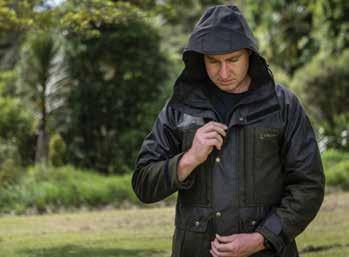
standards of sustainable and ethical production.
“We monitor farms and track all stages of wool production, ensuring compliance with Wool Integrity guidelines.”
Harvey Stewart, R&D manager for Kaiwaka, highlights how collaboration built on shared values of quality and sustainability drives innovation and excellence in outdoor apparel.
“Kaiwaka Clothing has always tried to create the best workwear for farmers anywhere in the world.
“Our partnership with PGG Wrightson and the Wool
Integrity programme means we’re going further, leading the industry with innovations, quality, environmental sustainability, traceability, and animal welfare.”
Meantime, wool was last month classified as an ‘environmental good’ under the Agreement on Climate Change, Trade and Sustainability (ACCTS), an innovative agreement that will help eliminate tariffs in several countries.
This recognition is a win for NZ sheep farmers and part of a positive trend in global agreements, Beef and Lamb NZ says.






Print up-to-date SDS’s & Haznotes from novachem.co.nz to ensure you are compliant.

A high-tech, broad spectrum copper fungicide from one of New Zealand’s leading crop protection companies is now BioGro organic certified.
John van der Linden, horticultural technical specialist for Corteva Agriscience, says this is great news for both organic growers, and conventional growers who prefer to use organic inputs on fruit and vegetable crops.
The product in question is Kocide Opti, which is already well-established in the NZ market, and has earned firm favour for a technically advanced formulation, he says.
Featuring more bioavailable copper, allowing lower use rates and application of less active ingredient per hectare, Kocide Opti creates copper matrix-like complexes on the plant after application which resist wash off and give extended protection.
“The special co-formulant in Kocide Opti allows the copper crystals to adhere to the leaf surface and act as reservoirs, continously releasing copper ions in the presence of moisture, forming a protective barrier that prevents infection,” van der Linden explains.
He says while many copper products are available to NZ growers, it’s important to realise that not all are created the same, nor do they perform the same.
“The direct measure of effectiveness is not the metallic copper content alone, but the amount of bioavailable copper ions produced, as this is the component that protects from disease.
“In turn, the most effective copper compounds are the fixed coppers, which are formulated to be less soluble to reduce possible plant phytotoxic effects.”
Copper hydroxide, which is the active ingredient in Kocide Opti, is a particularly good example of fixed copper, he says. Crystals of these compounds have the largest surface area for the release of bioavailable copper ions.
The actual size of each copper particle matters too.
While copper particles of less than 1 micron
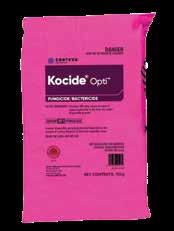

are immediately available, they can cause phytotoxicity if present in large amounts and can be easily dislodged from the plant, van der Linden says.
Kocide Opti has a median particle size of 2.5 microns, maximising effectiveness and the amount of fungicide retained on the leaf, providing excellent retention after rainfall for sustained activity.
A key advantage of the formulation is less metallic copper is applied and less remains in the soil compared to other copper formulations, resulting in lower long-term environmental impact.
From October, customers will have the option to purchase the 10 kg size of Kocide Opti in new paper-based packaging.
For more detail contact your local Corteva Agriscience territory sales manager.

Buildings, sheds and food storage areas can attract large numbers of rodents, so ongoing effort is required to reduce trap or bait shyness. Our toolbox will guide you through how to manage pests across your buildings and storage areas.
A new digital platform for aphid management in cereal crops provides New Zealand arable growers with easy-to-access information, all in one place, to help them decide if they need to use insecticides or not.

Developed by the Foundation for Arable Research (FAR) and HortPlus, the Aphid Chat web-based information platform brings together aphid reproduction rate modeling with monitoring data from regional sites that track local populations of aphids and the beneficial insects that prey on them.
The platform also includes relevant curated information from authoritative sources on topics including beneficial insects, crop
growth stages, insecticide options and considerations for aphid management, and the toxicity of various insecticides for resident beneficial insects.
FAR technology manager Chris Smith describes the platform as a ‘one-stop shop for everything to do with aphids’ and says the genesis for the tool was growers themselves.
“People have been saying they can’t find the information in different places and they wanted everything in one place. It was about bringing it all together, so it’s on your phone, or a website, where you can look at it instantly.
“It also considers weather data from HortPlus and we will soon release functions that take into account the growth stage of the crop and whether growers have used insecticide on their seed to provide more risk insight.
“This will complement the current functionality of aphid and beneficial insect monitoring and aphid reproduction modeling by making clear guidance for growers on the level of aphid risk to their crop.”
HortPlus director Mike Barley says collaborating with FAR and other experts had led to the creation of ‘a valuable tool for all things aphid’ that will aid practical decision making.
“At a glance you can see the latest aphid
There’s a lot of debate about water and how best it should be used in agriculture.
Zeba, from sustainable protection solutions provider UPL NZ, is a leading-edge product that aims to address this urgent challenge and help manage agriculture’s water footprint and availability challenges. Patented and biodegradable, Zeba improves plant production and seedling
establishment by retaining water and watersoluble nutrients (including nitrogen) in plants’ root zones.
These are then released to the plants as they grow.
Each Zeba granule holds up to 400 times its own weight in water.
and beneficial insect monitoring details, the situation report for a particular location, the reproduction rates of aphids in that area, and ultimately the overall risk bringing this all together.
“Working closely with FAR and other organisations on the curated information covering monitoring processes, aphid predators, parasites and control options has created an easily-updatable platform that includes summaries of the most current research, along with guidance to growers on where to find more knowledge.”
As well as reducing crop losses through better understanding of aphids, the tool could also help to decrease overall insecticide use by highlighting non-chemical options growers can harness for aphid management as part of a ‘more holistic integrated pest management approach’, Barley says.
“There is a real need to bring key information together into a single easy-tofind location so growers making decisions can access everything they need to know about a topic.
“Our work with FAR to support aphid management is just the start. There’s still a lot more we want to do with aphids and there’s huge potential to replicate and develop the ‘one-stop-shop information platform’ concept in other areas, including irrigation, fertiliser and more.”
Zeba is well-proven in arid nations including Australia, South Africa and India as well as in some of the toughest country you’ll find in New Zealand.
Jo Shannon, together with her sister Vicki, run a family farm in the beautiful but climatically challenging Ida Valley in Central Otago.
The flat, very dry area has long, hot summers and freezing winters.
On 500 ha the family run Perendales, with a terminal mob of Perendale ewes crossed with Hampshire and Texel rams, and South Devon cattle.
Having feed for the animals is critical to the farm’s smooth running and economic viability. The Shannons both open minds and eyes when it comes to finding highperforming, cost-effective solutions.
Jo Shannon says they use mixed pasture in
Helping your farmers get more out of their existing pastures this season – without breaking the bank – could be as easy as implementing a strategic spring weed control programme in coming weeks.
This may be particularly valuable and cost effective for paddocks which have been damaged by animals during wet winter weather, says Nufarm territory manager Celese Smit.
“Home-grown feed has never been more important to farmers’ bottom lines than it is right now.
“Every kilo of quality pasture consumed directly by cows dilutes farmers’ costs of production per kilo of milksolids, meat or liveweight, so the fewer weeds they have, the better.”
Right now, production-limiting weeds like Californian thistle, dock, buttercup, fleabane and water pepper are germinating or have already started under existing pasture covers.
As soon as these pastures are grazed, and sunlight can reach down to the base of the sward, weed seedlings are ready to take off.
Smit says a free online tool from Nufarm makes it fast and easy to find out what such intruders could cost your farmers if left to grow and spread.
And this tool has already found favour with farmers looking to optimise their investment in weed management.
“The Grassmanship App is designed to help farmers get the best out of their
pastures year-round, and now is the perfect time to use it for planning spring weed control.
“Since it was launched in autumn, www. grassmanship.nz has allowed dozens of farmers and technical field reps to compare and contrast the net return on investment per ha from different weed spray scenarios, and so maintain their home-grown feed production.”
When budgets are tight, feed, labour and weed management programmes are often farm expenses that come under scrutiny, she says.
“We understand why this is, but we also know that it can be hard to quantify the cost to pasture production and quality that comes from cutting back on weed control.
“That’s why the Grassmanship App is pre-loaded with separate dairy-specific calculators for both the North and South Island that cover common scenarios like spring weeds, new pasture and winter weeds.”
In most cases, she says, the relatively small investment required to control pasture weeds pays a return within six to 12 months in a range of situations.
Well-timed spring herbicide not only enhances pasture dry matter in the short

term, it also helps prolong the life of existing pastures so they grow well in future seasons too.
The secret to success is acting early.
“By the time most spring germinating weeds flower in summer, it’s too late to control them, certainly without damaging clover. They’ve already depressed pasture production, quality and cow intake,”
Smit says.
She advises encouraging farmers to check the state of all their paddocks this month, so they know what’s growing amongst the grass and clover, then consulting the Grassmanship App to identify the possible return on investment when choosing to spray.
To use the app, visit grassmanship.nz and talk to your local Nufarm territory manager.

some paddocks to help crops withstand the temperature variations and soil conditions which include hard, shallow pans.
Having taken part in a trial of Zeba, the sisters were won over.
“It’s an amazing product,” Jo Shannon says. Initially, five ha were trialled on the property, three ha treated and two ha untreated, with the difference clearly visible.
The Shannons then extended their use of Zeba and Jo Shannon reckons they’ve been repaid for their confidence.
“We’d recommend it to anyone. It worked and gave plants a chance to get established. Without it, we just wouldn’t have the crops we have now.”
They planted summer crops in October to fatten lambs and say, thanks in part to Zeba, the feed lasted to April.
“We’ll use it again.”
While Zeba helps save money and benefits crops, soil and the environment, UPL NZ
Otago Southland regional manager Tom McDonald has a very pragmatic way of describing why to use it.
“Zeba is an insurance policy. Much like the way you’d choose to use treated seed over untreated. Crop growth is maximised, and growth checks minimised. It especially comes into its own when you’re looking at crop establishment, and for crops where you only really get once chance – like maize and forage brassicas.”
Zeba remains active in the soil for 3-4 months and leaves no residues behind.
For more information on Zeba, talk to your local technical specialist or UPL NZ.

Helping your customers get the better of slugs before they get the best of new crops or grass is not just a matter of good planning and preparation this spring.
It also comes down to recommending the right product, says Nufarm product manager Matt Strahan. And when it comes to controlling slugs, nothing can compare to the reigning heavyweight champion SlugOut.
A cost-effective solution, proudly developed and proven in New Zealand conditions, SlugOut combines weatherability and palatability with a very high loading of active ingredient on the surface area where slugs eat. FAR trials show that in most situations the amount of active ingredient in the edible portion of the pallet is more than double other slug baits on the market. With two to three times more baits per square metre than other slug baits, and a faster kill, farmers can rely on it for peace of mind and good
establishment, Strahan says.
It’s not toxic to earthworms or predatory beetles, and is durable in wet weather with a mould inhibitor included in the formulation.
But no matter how big or small the job, a good outcome starts before the drill gets anywhere near the paddock.
That’s because slugs are one pest where a proactive approach is essential to avoid seedling damage.
“The more you can do to get your farmers and growers to check their paddocks before spring sowing, the better,” Strahan says.
“Once the damage is visible, it’s often too late to do much about it and slugs can make a mess of newly sown crops or grass in a matter of days.
“Drilling seed without monitoring for slug pressure and without bait can be very

risky, and when farm incomes are under pressure, it’s just not worth the loss of newly germinated crop or grass seedlings.”
SlugOut is a must for any direct-drilled seed, because the plant residues left behind with this cultivation technique provide the pests a perfect environment to live and breed. Strahan says coverage remains a key consideration in weighing up bait options.
“At the recommended label rate of 10 kg per ha, FAR trials show SlugOut has 112 bait points per sq metre, which is much higher than other baits with the same active ingredient.”
He recommends broadcasting SlugOut at 10-15 kg per ha at or immediately after sowing. Split
The Environmental Protection Authority (EPA) has approved the release of a rust fungus to control the spread of Chilean needle grass, an invasive weed that not only harms animals, but has the potential to cost farmers millions of dollars in lost production.
Marlborough District Council applied to use a strain of rust fungus, Uromyces pencanus, as a biocontrol agent against Chilean needle grass (Nassella neesiana) in New Zealand.
Over 2600 ha in the region is affected by the weed.
Council biosecurity manager Liam Falconer describes the release as ‘significant’ and
says it has involved many years of work from councils, Landcare Research, EPA and the community.
“We hope the rust will become well established in Marlborough, slowing the growth and seeding ability of Chilean needle grass and reducing harm to livestock and loss of production,” he says.
“Testing shows this rust
fungus can successfully slow infestations, killing the foliage of Chilean needle grass as well as reducing its growth and seed production.”
Falconer says biocontrol is a long game and it may take a number of years before an impact from the initial releases is seen.
“This rust fungus is host‐
applications – with half the bait spread five to 10 days before sowing and the other half at planting – usually give the best results, he says.
“Above all, make sure they don’t leave it one to two days after sowing! When we say immediately, that’s what we mean.”
The bait can also be direct drilled at 10 kg/ha into the furrow with seed, but only where the drill leaves a distinct open drill slot which is not common with modern drills.
An important change for end users this season is the launch of a new 500 kg bag which will make slug control even easier for large scale sowing jobs. For more detail contact your local Nufarm territory manager.
specific, meaning it only lives on Chilean needle grass and is highly unlikely to harm native plants or animals. There is also no risk to people.”
Chilean needle grass is a perennial grass from South America and was first identified in NZ in the 1920s.
It was first recorded in Marlborough in the 1940s in the Blind River area.
Plants form dense clumps, excluding pasture species and reducing farm productivity with the potential to cost farmers millions of dollars in lost production.
Animal welfare is also an issue as the seeds have sharp tips that can bore into pelts and eyelids, causing blindness.
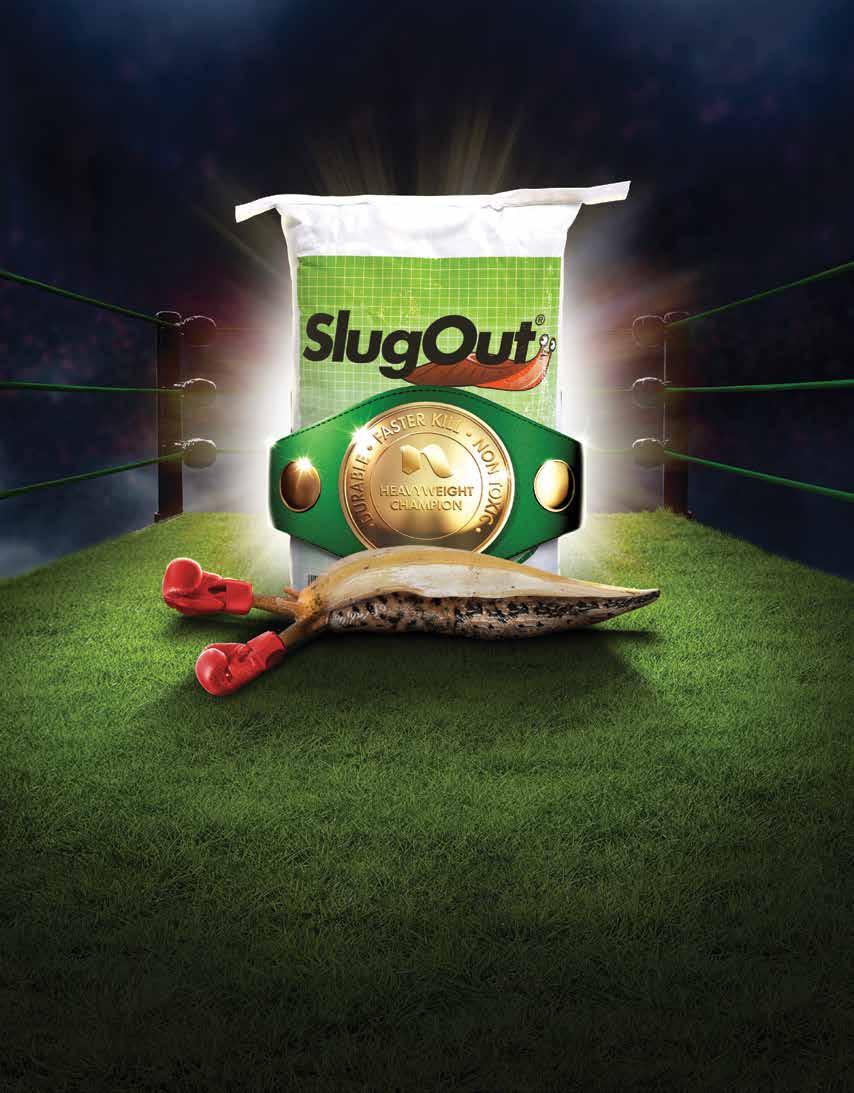
Strong, Palatable and Proven, SlugOut® is still the heavyweight champion in moderate to high pressure situations.
• 2 to 3 x more baits per m2 + Faster kill = Peace of Mind in more situations
• A cost effective solution, proudly developed and proven in NZ
• Not toxic to earthworms or predatory beetles
• Durable in the weather with mould inhibitor Contact your local Rural Supplier or Nufarm Territory Manager today, or for more information visit nufarm.co.nz/slugout







DON’T GET CAUGHT OUT - Make sure you are up-to-date!
• Over 140 new listings
• 160 deleted products
• 100 existing labels updated (new weed, pest & disease claims)
Plus the latest regulatory amendments
The definitive guide to agrichemicals registered for use in New Zealand.
A comprehensive alphabetical listing of products, active ingredients, crop & weed tables, weed & pest identification and much, much more all in one single publication. It really is the definitive agrichemical guide and the only one you’ll ever need.
Purchase a manual to receive a FREE 12-month subscription to our subscriber only website.
The website is continually updated and contains product listings, a fully searchable online product manual, a powerful search engine of weeds, diseases & pests, including photo galleries with all the agrichemical options to use on individual crops as well as up-to-date SDS’s, Haznotes and product labels, plus posts about industry news and information.
NOW to receive your FREE pair of SureShield Coveralls

SureShield Coveralls supplied by pH7, provides both protection and comfort with exceptional liquid and particulate protection. Ideal for a wide range of industrial applications. One size fits all.
Shigematsu Respirators supplied by pH7.
* Available to those who order directly from www.novachem.co.nz - while stocks last.
Print up-to-date SDS’s & Haznotes from novachem.co.nz to ensure you are compliant.
Words: Animal and Plant Health New Zealand
As farm systems evolve to meet efficiency, environmental and wider sustainability goals, the demand for new solutions is growing.
By accessing innovative solutions, farmers can boost productivity, keep livestock and crops healthy, and lower greenhouse gas emissions.
NZ livestock production predominantly relies on pasture-based systems.
Fluctuating growth rates throughout the year means farmers rely on fodder crops such as beet, brassicas and maize to reduce seasonal feed shortages and animal welfare issues.
If one food source is compromised, pressure mounts on the others, so protecting these from pests and diseases is vital.
The solution is a broad toolkit of options. Something old, something new, something borrowed (only when needed), something green and management practices.
Of existing products available, some are at different lifecycle stages, require replacement, or face resistance challenges. It is crucial that new products undergo rigorous testing through a trusted process to ensure safety and efficacy.
Once approved, these innovations can greatly benefit agriculture, especially when multiple innovative approaches work together for synergistic effects.
Innovation from APHNZ members highlights the benefits of preserving feed crops, resulting in better environmental, productivity and biosecurity outcomes. Beet can be grazed in situ or harvested for livestock, offering an alternative to disease-prone brassicas and outperforming maize in cooler climates like the South Island.
Planted in spring, beet benefits from optimal conditions, yielding over 25 tonnes of dry matter per hectare with excellent shelf life.
Research funded by MPI’s Sustainable Farming Fund shows beet requires less nitrogen fertiliser and results in less nitrate leaching compared to other fodder crops.
A new to NZ innovation uses lower herbicide application rates, aligning with sustainability initiatives that the primary sector is front footing and adopting. This herbicide, paired with herbicidetolerant beet seed, effectively controls difficult weeds such as fat hen and nightshade.
Using a conventional beet herbicide programme, farmers apply four herbicide treatments at high application rates; whereas the new system requires only two applications of 0.5 litres per hectare, reducing active ingredient use from 6,000 grams to 80 grams.
This innovation minimises herbicide use, saves time, reduces the number of passes over the paddock, thereby reducing soil compaction, fuel use, and greenhouse gas emissions.
It also offers a wider application window for flexibility, benefiting farmers, as spraying is often affected by the availability of the spray contractor and weather conditions.
Brassicas, such as kale and swedes are prone to a range of diseases such as clubroot when grown too frequently in the same paddock.
Recently approved innovation includes increasing the availability of biological control agents as part of agroecological crop protection and fungicides to address resistance issues.
A new-to-NZ bioinsecticide for the control of diamondback moth, a priority pest in brassica crops, is awaiting regulatory approval, with the support of the A Lighter

Touch Programme and wider sector partners such as Vegetables NZ. Maize is another supplementary feed, at risk from fall armyworm.
Arriving in NZ in February 2022 by winds from Australia, the pest is spreading globally, affecting the Americas, Africa and Asia, as well.
To address known resistance issues, new modes of action were needed to support the initial biosecurity response and subsequent spread of the pest. Efforts have refocused to longer-term pest management and ongoing access to innovation, as more options allow us flexibility to adapt.
All three examples show the individual and synergistic benefits of innovation by APHNZ members in supporting farmers and growers.
More solutions that support IPM, reduce overall agrichemical use and help with resistance management are awaiting regulatory approval.
Multiple options and collaborative efforts allow us to tackle challenges from different angles.
Embracing these solutions ensures a resilient and sustainable future for farming in NZ that benefits both farmers and the environment.
Animal and Plant Health NZ represents the New Zealand animal health and crop protection industries as well as rural retailers. The industry association promotes the benefits of safe, effective, quality products and services for the health of animals (including pet care) and crops. Its members are committed to the responsible use of products from research to disposal.
“I’ve had an idea!” These famous words have been the beginning (or end) of many great things, depending on how you look at it.
Jayson Houghton has had more than a few ideas, and it goes without saying that first one - to focus his career on pursuing ideas for others - was probably his greatest.
A creative director for more than two decades, Houghton has brought to life the unique blend of logic, and original thought, that underpins successful marketing for some of the biggest brands in New Zealand’s primary sector.
“We’re often asked, what is creative?,” he says.
“Essentially, it’s the core ‘idea’ in your marketing campaign communications, and is the visual expression, through images and words, of your brand or product to connect with your target audience.”
Houghton says a great idea in this context should always do three things –capture attention, generate recall, and elicit a response.
In the bustling world of advertising, it’s easy to get swept up in the allure of cutting-edge technology, urban trends, and digital innovations.
However, some of the most impactful and memorable campaigns are born from the simplest and most authentic ideas, particularly in rural marketing.
“The power of a creative idea in a rural setting can transcend traditional marketing barriers, forge deep connections, and drive substantial results,” he says.
Creative thinking is the cornerstone of successful rural marketing campaigns for several reasons.
Rural communities often have unique cultural values, traditions, and communication styles, and they value authenticity and practicality. A strong creative idea that has authentic storytelling and resonates with these

values can cut through the noise and create a lasting impression.
Leveraging
Successful rural campaigns are often rooted in local insights and nuances. A deep understanding of the community’s way of life, challenges, and aspirations can inspire creative ideas that are both relatable and impactful.
While digital media is rapidly gaining traction in rural areas, traditional media such as radio, print, and outdoor advertising still hold significant sway. A creative idea that seamlessly integrates these mediums can amplify the campaign’s reach and impact.
“A good creative idea can last for years, evolving as your business priorities shift, but staying true to your core brand values and remaining recognisable to your audience,” Houghton says.
At Hot Mustard, NZ’s first specialist rural marketing agency, he has been pivotal
in helping brands such as Agricom, PGG Wrighston, Power Farming, Farmlands, Gallaghers, Ballance Agri-Nurtrients, Te Pari, Landpower and many more over the decades, connect with farmers through the power of a big idea.
With farmers being bombarded with ads and messages every day, now more than ever it’s important to ensure your messaging is simple, authentic, memorable and stands out from the clutter.
Houghton says one key mistake marketing teams often make is looking at their brands from an internal perspective, through the lens of ’this is what we can do’.
Fundamental to his approach has always been to put himself in the consumers shoes (or gumboots), turn this on its head and view it from a consumer’s perspective so the approach instead becomes ’this is what we can do for you’.
If you need help with your next rural marketing campaign, reach out to the team at Hot Mustard. Call Natalie Allen on 021 031 4869. hotmustard.co.nz
Founded in 1989, the Fresh Fruit Company of New Zealand (Freshco) is a leading fruit and vegetable exporter based in Auckland, with orchards, packing houses, cool stores and offices in key growing locations throughout the country.
It grows and sources highquality apples that meet the stringent quality and safety requirements of demanding customers around the world.
Freshco recently implemented the new LUCAi upgrade package on its TOMRA Spectrim grading platform and found it to be a game-changer.
It allows Freshco to not only tackle laborious stem split and puncture defects, but to move seamlessly between varieties without making adjustments.
The upgrade package for Spectrim includes Deep Learning models, pre-trained by vast datasets captured from TOMRA machines across the world and precisely labelled
by the company’s data science team.
The new technology assesses thousands of high-resolution, multi-channel fruit images every second and cross-references them with these datasets to make grading decisions.
It can precisely detect and classify even the trickiest apple defects, such as splits and punctures across multiple varieties.
“The main defects are around the stem area. The splits are really hard to get around the stem, and you’re forever working on the splits and punctures,” explains Robin Mudgway, technology and machinery manager at Freshco.

“With LUCAi we get a model from TOMRA and then we just put our own severity and confidence into it.”
The system enables the operator to seamlessly switch varieties without slowing down the process.
“You can use a model that is doing stem split and stem punctures, for example, on Gala apples. Then you can move to another variety that has the same defect and it just works. You don’t have to make any adjustments to it,” says Glen Kaunds, TOMRA food senior application engineer.
It also allows customers to easily adjust the severity of grading parameters –something which previously had to be done by experienced operators – to cater to seasonal dynamics and market preferences.
“We deal with a lot of Royal Gala and Breeze apples, and they tend to have a lot of splits. LUCAi™ made it really easy to control that. Production was not slowed down at all like it would have in the past. This means that throughput stays at a good pace within the shed,” Mudgway says.
Since the closure of Fonterra’s ethanol plant at its Edgecumbe site in 2020, the site has been working to repurpose the old kit –and with the help of Proquip, it’s managed to recycle a remarkable 98 per cent, it says.
The remaining 2 per cent was made of treated timber, insulation, and polystyrene, for which there is no recycling opportunity in New Zealand.
The project involved a whopping 1615.84 tonnes of material being extracted – that is approximately 403 adult elephants.
This included steel from the building, steel extracted from the concrete, and various other building items.
Twenty-one tonnes were processing components, for example, valves, pipework and cables, and this was recycled with the funds coming back to Fonterra.
The concrete, once separated from the
steel, was put through a grinder and reduced to a type of concrete that was used to level the site and provided to Fonterra farmers for use in improving farm tracks.
The Edgecumbe project incorporated the disassembly of the ethanol plant, the removal of assets and restoring the area to a state where it can be repurposed as part of the wider site.
Many items were preserved and repurposed for application at Edgecumbe, while others were distributed to different Fonterra sites nationwide for use in alternate projects.
Excitingly, says Will Rouse, regional engineering project management, the main part of the ethanol fermentation equipment was sold to a NZ company for potential use in a biofuels project.
Rouse says the demolition work completed the five-year programme of work.
“It was the final piece of the puzzle to eliminate the hazardous process from site while also reducing water usage and effluent generation significantly.”
Proquip provides innovative solutions for assets that have reached the end of their natural lifecycle.
Farmlands is opening its first-ever Horticulture Hub in Hastings.
It will be joined by a bulk rural supplies and retail store next year on the same site, creating a one-stop site for all Farmlands’ customers in the region.
Mid-2025, a brand-new Farmlands store will also open in New Plymouth.
The move reflects Farmlands’ commitment to supporting the growth of horticulture in Hawke’s Bay and the recovery of the local agricultural sector following the impact of Cyclone Gabrielle.
Farmlands CEO Tanya Houghton says that Farmlands is investing in the region in a way that reflects its unique character.
“Hawke’s Bay is New Zealand’s largest apple, pear and squash-growing region, and our second-largest wine-growing region.
It’s also where Farmlands originally started. The new hub demonstrates our commitment to invest in the region in support of our horticulture customers.
“We have been looking for a new location for our New Plymouth store for some time,
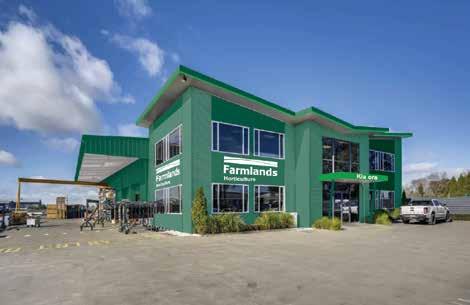
so we are excited to also announce a new store will be built in 2025 to allow us to better meet the needs of our customers and shareholders in the Taranaki region.”
Farmlands’ future New Plymouth store will be at 35 Hudson Road, Bell Block.
The new Farmlands Horticulture Hub, located at 7 Barnes Place, Twyford, is a dedicated facility designed to cater specifically to the needs of horticulturalists, offering a full array of products and expert advice essential for the upcoming spring season.
Chris Binns, Farmlands head of sales and strategy - horticulture, says the co-op’s aim is to be the go-to Hawke’s Bay crop protection specialist, working hand-in-hand with commercial growers by offering them the best possible advice,
products and service.
“The new site will be more accessible to customers, and will enable us to practice proper dangerous goods management, so we can safely keep more ag chem stock locally, ensuring consistent availability of essential supplies for local growers.
“We’re also growing our team of horticulture experts in the region, so there’ll be more support on-hand locally for a wider range of customers,” he adds.
Tanya Houghton says Hawke’s Bay horticulture contributes $1.2 billion to the economy, and employs eight per cent of the region’s workforce in permanent roles.
The government’s goal is to enable the sector to grow around 20 per cent above pre-cyclone 2030 forecasts, which would put it at a value of $2.5 billion in 2030.
This includes the buying and selling of second-hand equipment and managing the disposal of assets to maximize their return.
For years, Proquip and Fonterra have been working side by side to reallocate and maximize the return on surplus assets, both within NZ and offshore.
While there’s an obvious financial element to this work, there is also a significant focus on Fonterra’s strategic priority of sustainability, ensuring that it is central to every project.
Proquip director Mark Dykes says it’s rewarding to see results that go beyond the site.
“Through teamwork and focus, we’ve not only made a positive difference for this Fonterra site but also the wider community and the environment in and around Edgecumbe.”

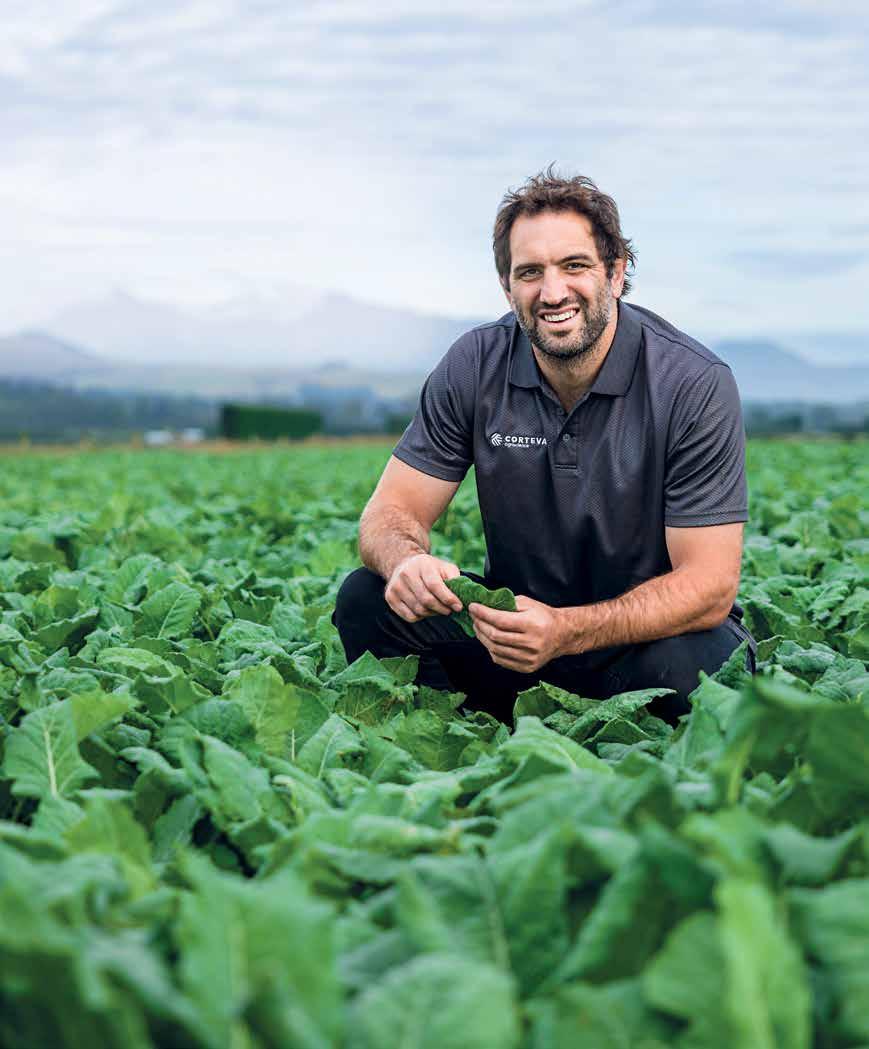
I’ve had some great teammates over the years and my friends at Corteva Agriscience are up there with the best of them.
Their suite of world class products – including Tordon™ Brushkiller XT, Tordon™ PastureBoss™, Korvetto™, Sparta™ and Transform™ - helps farmers achieve truly exceptional results.
Corteva are on a mission to enrich lives for generations to come – and that’s exactly the kind of company I want on my side.
For more information talk to your agricultural merchant or call 0800 803 939 today. Always read the label before use.
Alan Cliffe’s pathway into New Zealand’s primary sector involved neither a rural upbringing nor industry-specific university education.

But that didn’t stop him becoming one of the country’s most experienced technical specialists in crop protection.
Now, after close to 50 years with Nufarm and its legacy companies, he’s stepping back from a career that turned out to be way more interesting, challenging and rewarding than he could have ever imagined as a young zoology graduate in the mid 1970s.
Both horticulture and viticulture have since become such powerhouse primary industries that those starting their careers now have no shortage of opportunity to advance across a wide range of business specialities.
“We’re talking about organisations that contribute a lot of overseas income to the NZ economy.
“Some of these businesses are huge, and offer potential careers in management, operations, finance, quality control and production as well as technical support and agronomics.
“With kiwifruit and wine in particular, there are global opportunities as well,” he points out.
Cliffe first started working in horticulture doing field trials on insect pests in Nelson apple orchards and found both the industry and the people so much to his liking that he never looked back.
It was a dynamic and exciting time to be in the industry: “We got involved in the first grapes in Marlborough, and the first kiwifruit in Nelson.
“As well as growers, I got to work with leading researchers at the then-DSIR, and MAF horticultural advisors who were helping introduce new crops.
“I always thought if I learned something valuable and new every day, it was a good day.”
Then and subsequently, when he moved to Auckland with what would become the Nufarm of today, there was also the chance to work with a big, diverse range of multinational crop protection companies that
were continually rolling out new products across all sectors of both horticulture and agriculture in NZ.
“It was never boring, that’s for sure.”
And he’s never been tempted to move away from the technical side of crop protection.
“I got a lot of satisfaction from getting a new product all the way through the development process to market release, from setting up the initial protocols for testing a new compound or formulation, to seeing it achieving commercial sales.”
HiCane is one of his standout career high points, a bud breaker for kiwifruit that has been estimated to be now worth millions to the local economy every year.
“We were right at the heart of that product. I did my first trial on it in 1985, and it was not an easy product to develop. I’m proud of it, and of the fact that we were able to successfully defend it through an Environmental Protection Authority reassessment earlier this year.”
ReTain plant growth regulator, which was first released to the NZ market more than 20 years ago and remains the only product of its kind registered for apples and cherries, has been another satisfying and influential development.
In terms of pest control, things have changed tremendously during his career, Cliffe says, citing the development of IPM, softer chemistry and targeted, selective products for major agricultural and horticultural pests.
Outside of Nufarm, he has also been heavily involved for many years in supporting the NZ crop protection industry as a whole and representing its interests at government level, both through Agcarm and its successor, Animal and Plant Health NZ.
His work on industry-good issues such as data protection, product labelling, spray drift and chemical reassessment have benefited many in NZ’s primary sector, industry sources say.
“Looking back, it’s been fun and challenging.”
Cliffe finished up with Nufarm at the end of July, and says he is now looking forward to spending more time in the garden, fishing and visiting family in Indonesia.
A life-changing cricket injury forced Joel Hensman to step out of his daily routine and adopt a broader perspective on life. It’s a skill he believes is also essential for farmers.
As Perrin Ag’s newest senior consultant, Hensman is dedicated to helping clients see the bigger picture of their businesses and make informed decisions that support both their operations and personal well-being.
Joel Hensman’s journey into agriculture began on Thorn Flat, a 1000 hectare block of Kereru Station backing onto the Ruahine Ranges.
This upbringing instilled in him a deep connection to the land and laid the groundwork for his future in New Zealand’s primary sector.
He went on to earn a Bachelor of Applied Science in Agriculture from Massey University, which further solidified his passion for farming.
“I help our clients step out of their daily realm and look
at things through a broader lens. When you start talking to farmers about their goals and then look at what their longterm vision is, sometimes the two don’t align,” he says.
Balancing his recovery from severe post-concussion syndrome after being struck in the head with a cricket ball during a social match taught Hensman to prioritise what truly matters.
“Part of my recovery was figuring out what’s important - simplifying life and doing the things we often push down the road,” he explains. This experience gave him a fresh perspective and a holistic approach to farm consultancy.
“I am acutely aware of the mental health challenges facing our industry and the need to maintain the sustainability of
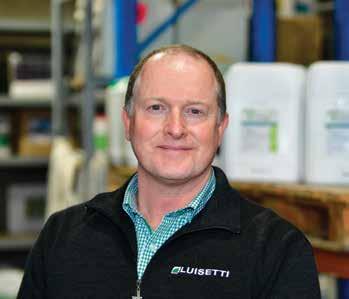

our land and our people. We want farm practices that ensure long-term success without compromising farmers’ well-being.”
Sometimes, these crucial conversations are best had in the everyday environments of farmers. “I am the kind of consultant who’s happy to get on a handpiece in the woolshed alongside a farmer if that’s a better place to have the conversation,” he says.
Hensman’s ability to think outside the box and empower others to learn and grow makes him well-equipped to manage farm supervision and strategic planning.
He has been involved in enhancing and supporting Māori-led organisations through farm supervision and major development projects, further
showcasing his versatile skill set.
His family reassessed their lifestyle following his injury, embracing minimalism by moving into a tiny house on 12 hectares of leased land near Palmerston North, where they graze dairy heifers. This change has allowed them to focus on what truly matters - spending quality time together and maintaining a balanced life.
“I’m not advocating for everyone to move to tiny house living, but it’s where we ended up when we started assessing our life alongside our career and family goals. It’s about taking a broader look and being open to alternatives.”
When not at work, Hensman enjoys mountain biking, tramping, hunting, and spending time with his family.
When Jason Gosney stepped into the agrichemical manager’s role at Luisetti Seeds recently he brought with him 19 years of experience and an extensive knowledge of crop protection and agrichemicals.
Gosney, who joined the company in late June, will be managing Luisetti Seeds’ agrichemical portfolio which includes working with supply companies to ensure growers are getting the best product for their needs at any particular time.
When Garry Begley first joined Cropmark Seeds in 1996, he promised to stay on the team for three years.

It’s been nearly 10 times that long. But as he prepares to step back from his roles at New Zealand’s only domestically owned forage seed breeder, he has zero regrets about spending much of his career with one organisation.
Begley hands over his responsibilities as Cropmark Seeds marketing manager this month to Kate Calder, who comes to the company with 10 years’ seed industry experience of her own.
And he says the time is right for her to ‘up the ante’ as Cropmark prepares to commercialise the latest results of its long established plant breeding programme.
“We have some really exciting material
coming through, including the launch this year of CM142 endophyte, which we have developed ourselves in-house and have worked on for many years.
“With her experience and strong capabilities in marketing, we’re excited about Kate joining the team.”
One of eight founders who set the business up in 1999, Begley has been in charge of marketing since he started, and more recently has also overseen Cropmark’s significant Australian interests.
Raised on a horticultural property in Hawke’s Bay, the primary sector was always where he wanted to forge a career, and his early years in the industry included
While Gosney was born and brought up on a market garden on the outskirts of Christchurch, he took a left turn and completed a zoology degree before returning to agriculture.
He initially worked for a seed company before joining Arxada (and its three predecessors) 19 years ago.
Gosney says he is really looking forward to working on ‘the other side of the desk’ in retail and working alongside the team at Lusietti
both electric fencing and live export.
But seed as a sub-sector of primary production has a special appeal, and he says if he had to do it all again, he wouldn’t hesitate to rejoin what he describes as an industry that feeds the world.
“It’s a great industry to be involved in. NZ is recognised as being among the world’s top breeders of temperate forage pasture seeds. And because we’re a small local company in a market dominated by multinationals, we have always had to stay on our toes and be on the lookout for future opportunities as farming has evolved.
“From the very start, we knew if we wanted to foot it with our competitors with proprietary forage varieties, we could not be an also-ran. We had to produce and breed top performing material, and that’s what we’ve done.”
Matrix ryegrass exemplifies this approach, he says. Launched in 2001, it’s still the leading diploid perennial ryegrass in Australia, with significant market share.
Begley says he’ll miss being involved in the seed industry once he hangs up his boots, “but I’ve got plenty planned!” And that includes spending time with his family, hunting, fishing, travelling and boating.
Kate Calder, meantime, says she’s looking forward to helping Cropmark leverage up and coming forage genetics for the good of NZ farmers.
Calder began her agri marketing career with Landpower before spending 10 years with Barenbrug, and comes to Cropmark with both a strong affinity for NZ’s rural sector, and a thorough understanding of the role that forage breeding and marketing plays in its continued success.
“Seed – and increasingly endophyte technology too – is where it all starts. Good pasture genetics have always been the foundation of NZ farm productivity, and play a critical role in helping farmers adapt and prosper in a fast-changing world.
“Taking over from Garry is a real privilege; he leaves big shoes to fill, and I’m excited to have the opportunity to build on his many years of work with Cropmark.”
Seeds, many of whom he is familiar with from his previous role. “Luisetti Seeds is a strong brand and they’re a great team.”
Outside of work Gosney, who lives in Christchurch, is kept busy with his family who all share a love of watersports, and he enjoys time on the golf course.
Jason Gosney can be reached at 027 280 0980 or Jason.gosney@luisettiseeds.co.nz.
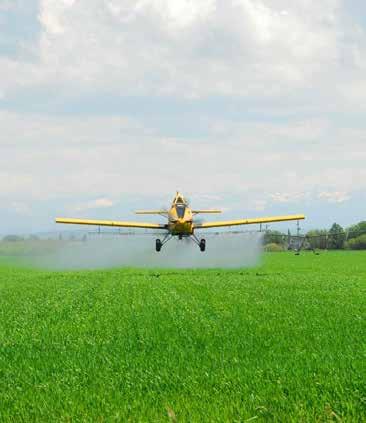
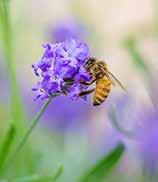
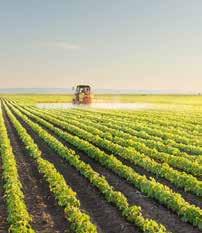
Aerial and ground spray applicators can help protect bees:
Avoid spraying in windy conditions to prevent drift. Take into account wind direction and atmospheric stability.
1 2 3 4 5 6 7 8
Implement an integrated pest management plan to apply pesticides only when necessary.
Coordinate with local beekeepers before spraying so nearby hives can be moved or otherwise protected.
Follow the instructions on the label to ensure you use only the recommended dose.
Use drift-reduction application equipment that is well maintained and calibrated.
Avoid spraying pesticides when bees are foraging
Avoid contamination from spray liquids when mixing and properly dispose of waste and other used materials.
Use genuine products and alert authorities of counterfeit or illegal pesticides as they have unknown impacts on wildlife.
A 25-year old Waikato man with four years industry experience has taken out the inaugural Nufarm RCNZ Agri-Chemical Applicator of the Year award.
Harri Moss, operations manager for Spraylink based near Cambridge, was announced the winner at the recent Rural Contractors New Zealand conference in Masterton. Runner-up was Todd Ealam who works for Methven-based spraying company Molloy Agriculture.
Moss won a trophy and $5000 fund to support his further education and development related to the crop protection industry.
Entrants needed up to five years’ experience and have a relevant agri-chemical qualification or be
working towards a recognised industry certification.
Their employer was required to be a member of Rural Contractors NZ who themselves held a current Registered Chemical Applicator Qualification.
Moss grew up on a family dairy farm near Matamata and did a Diploma in Agriculture at Lincoln University before driving harvest machines in Western Australia and South Canterbury.
When COVID-19 hit, he was contacted by Spraylink owner Michael Butler, who is a family friend, and offered a job.
He drove spray trucks around
UPL New Zealands’s Lincoln University scholarship for 2024 has been shared by Sam O’Neill, Henry Bartrum, and Millie Higginbottom.
The total scholarship award is worth $10,000.
Country head of UPL NZ Blake Mackie, himself a Lincoln University graduate, says those vying for the scholarship were of a high calibre and were all passionate about the sector.
“As a sustainable agricultural solutions provider, UPL NZ is committed to supporting initiative, enthusiasm, and fresh ideas. Sam, Henry and Millie have all of those in spades.”
Sam O’Neill is a fourth year Bachelor of Agricultural Science (Honours) student.

Waikato for two years doing crop spraying in spring followed by weed spraying before being offered the role of operations manager, supervising four to five drivers.
“I’m pretty keen to stick in the spraying industry. There’s a lot of variety and opportunity.”
RCNZ CEO Andrew Olsen said the awards reflected the highest level of expertise, compliance and innovation and Harri and Todd were worthy inaugural winners.
Announcing the winners, Nufarm national product manager Matt Strahan said there were a number of good
entries and it was great to have both a North and South Island finalist.
He says the awards recognise individuals who demonstrate excellence in agri-chemical application and innovation.
“The awards also reflect those industry leaders within the sector who are investing in the next generation coming through as demand for the services of agri-chemical contractors grows.
“They and their staff are performing at high levels on delivering crop protection solutions and ensuring these are applied sustainably.”
His Honours project is focused on the environmental and economic outcomes of a current and future Canterbury dairy system that adopts nitrogen loss mitigation strategies.
For O’Neill the sustainability of New Zealand food and fibre products is vital to maintaining and enhancing this country’s strong reputation and increasing demand for our products, globally.
Henry Bartrum completed a Diploma in Agriculture and a Diploma in Farm Management and is now

studying towards a Bachelor of Commerce (Agriculture).
Growing up on a sheep and beef farm in North Canterbury, he is very interested in getting the best out of sheep, beef and deer systems and is hoping to pursue a career in agriculture when he graduates.
Millie Higginbottom is studying for a Bachelor of Commerce (Agriculture).
Her passion for the sector comes from her rural upbringing, and protecting and promoting agriculture is very close to her heart.
Her goals for the next few years are to learn and experience as much as possible across the industry.
She says every challenge or adversity is an opportunity for growth and development.
Take the risk out of your pasture renewal – and get the best returns – by sowing a proven, quality product from Barenbrug. Ask your reseller, or learn more at barenbrug.co.nz/cheaper-isn-t-better

Supercharged with NEA12, Shogun is the pace-setter in 1-3 year pasture. Shogun NEA12
The phenomenal 3-5 year pasture, delivering performance your neighbours will envy. Forge NEA 1-3 years 3-5 years
Next generation perennial, our ‘go to’ grass for superior persistence & summer growth. Maxsyn NEA4 Perennial
Perennial
The superstar perennial, delivering high intake, yield, N uptake & persistence. Array NEA2
The benchmark in tetraploid perennials, it’s easy grazing & better for the environment. 4front NEA2

All over the country more and more growers and agronomists are turning to the trusted performers and the ever-growing range of crop protection and production solutions from BASF

